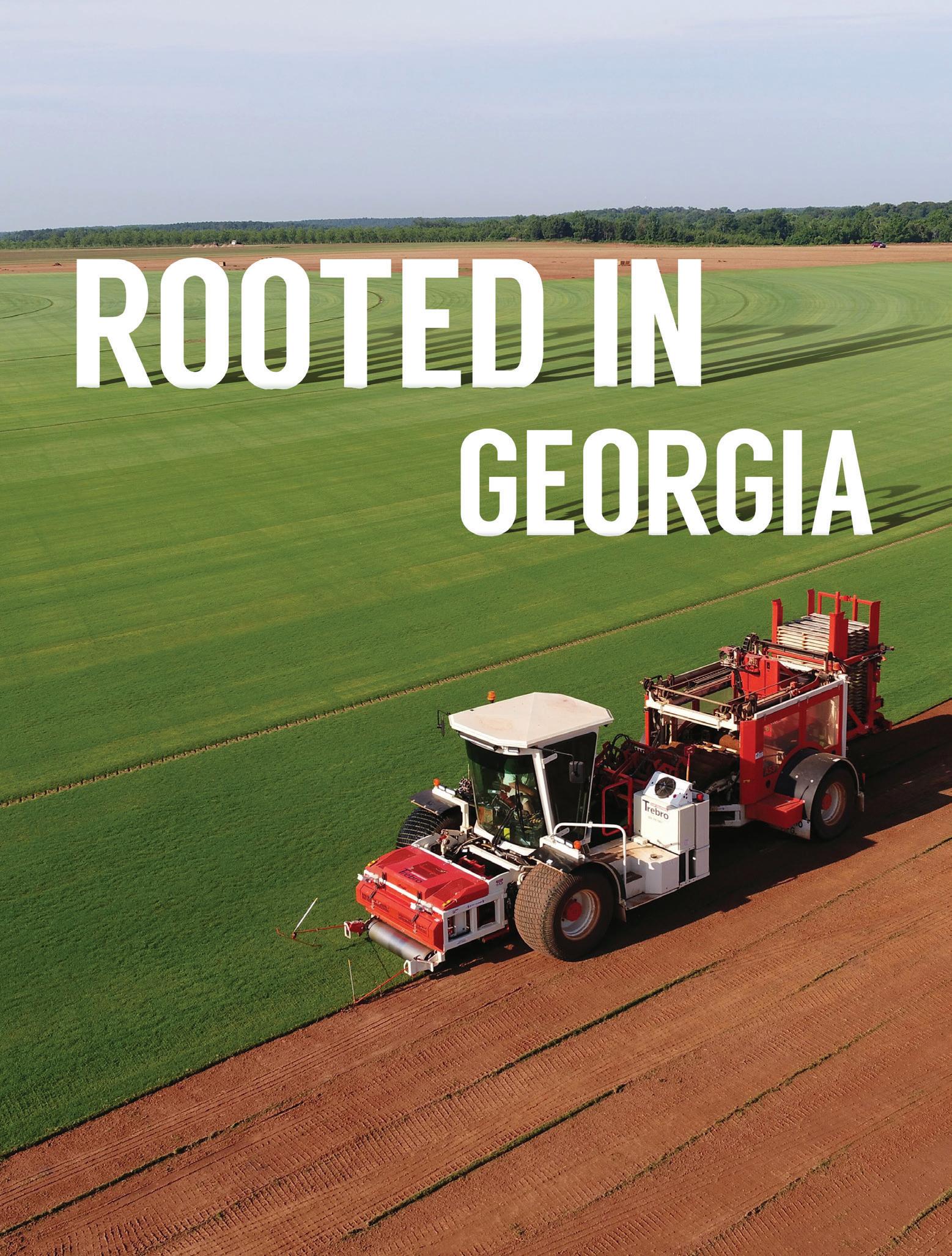
























Official publication of the Georgia Urban Agriculture Council
Board of Directors
Pam Dooley
Plants Creative Landscapes
Jennifer Jorge
King Green
Matt Lowe Swift Straw
Josh Morrow Athletic Fields, Inc.
Ken Morrow
The Turfgrass Group
Bob Scott
Irrigation Consultant Services
Ron White TurfPride
Ex Officio
Bodie Pennisi
UGA Extension Horticulturist
Clint Waltz
UGA Extension Turf Agronomist
Staff
Mary Kay Woodworth
Executive Director
Kathy Johnson
Marketing Director & Editor
A member of:
American Hort
Atlanta Botanical Garden
Federation of Employers & Workers of America
Georgia Arborist Association
Georgia Association of Water Professionals
Georgia Tree Council
Georgia Water Alliance
National Association of Landscape Professionals
National Initiative for Consumer Horticulture
Nursery & Landscape Association Executives
RISE (Responsible Industry for a Sound Environment)
Seasonal Employment Alliance
Tolar Capitol Partners
Georgia Urban Ag Council
2566 Shallowford Rd, Ste 104 - Box 117
Atlanta GA 30345
Phone: 706.750.0350
Fax: 404.900.9194
Email: office@georgiauac.com
Web: urbanagcouncil.com
All contents copyright 2024
Director
MALTA and Georgia UAC 40 years of educating, growing, and protecting 14 2025 GALA Now is the time to take your photos!
What did you miss? Gwinnett Tech Student Meet & Greet
What did you miss? Topiary Courtyard networking dinner
What did you miss? GALA awards ceremony & 40th anniversary celebration
FEATURES 18 Pest 411 Bristly roseslugs
20 Save the date 22 Health & benefits NWS and the CDC team up to create new heat index
26 What the tech? 7 Instagram video marketing tips
30 Safety works Flammable and combustible liquids 58 Directory of advertisers
32 Beyond the busy Making the most of the off season
34 Maximizing your workforce The 401(k)’s role in small business success
36 Navigating the hard insurance market A simplified approach
38 What keeps you awake at night? 5 top challenges for business owners
40 Smart Approved WaterMark for turfgrass Proven savings
42 Transition for GCLP and GCPP programs A message from Greg Huber
44 Personalities, politics, and partnerships Teamwork forged progress
47 UAC’s Political Action Committee “Together we grow”
48 Capitol Connection UAC member survey results
49 Safe Digging Month Governor Kemp meets with stakeholders
AG
50 Lawn and beyond The powerful benefits of natural turfgrass
52 Striking a sustainable balance Good for the planet, clients, business
54 Night and Day EZ Scapes TM perennial recipes
56 Plant primer Ornamental plant terms, categories, and varieties
After one of the most spectacular spring flower seasons in years (what a year for hydrangeas!), summer has settled in. As always, we hope for adequate, spread-out rainfall and not too much blistering heat.
In the southeast, employee safety regarding heat exposure is a very real concern, and OSHA’s Advisory Committee on Construction Safety and Health has unanimously recommended that the agency move forward with its proposed standard on protecting workers from excessive heat.
Planned federal mandates to protect indoor and outdoor workers from heat stress would kick in anytime the heat index reaches 80 degrees Fahrenheit, four degrees higher than a prior proposal, according to an update from OSHA officials.
A notice of proposed rulemaking could appear sometime before October 1, acting Labor Secretary Julie Su said during a May 1 House Education and the Workforce Committee hearing. “As part of the rulemaking process, the agency will seek and consider input from a wide range of stakeholders and the public at-large as it works to propose and finalize its rule,” OSHA said in a May 8 press release. We will keep you informed as this rulemaking process moves forward.
While we take a summer break, moving towards fall, we’ve got some great events planned!
August 7
We will be on the UGA Griffin campus for UGA Turfgrass Research Field Day, with an outdoor tradeshow for vendors and suppliers.
Also, we will also be hosting two additional educational sessions from 1:30 pm - 2:30 pm that day:
> “Pesky Critters in the Landscape and How to Manage Them”
> “Insect Identification and Pesticide Safety”
Choose to attend one of these sessions and earn 1 hour GA Cat 24 credit.
Registration for these sessions is separate from the UGA Turfgrass Field Day registration and can be found on our website.
September 24
Join us at the Woodstock Arts Event Green for a great evening of socializing, visiting vendors/suppliers and a presentation by Jeff Harkness, 3PG Consulting. Jeff is an expert on mergers and acquisitions and will give us insight into what’s happening in the landscape industry. Sponsorships are available for this event!
October 8

Caldwell Tree Care in Roswell will be our host for another great evening of networking, dinner and two of our favorite speakers: Dr. Richard Ludwig (Landscape Workshops) and Eric King, ASLA (King Landscaping), discussing “Sustainable landscape design and maintenance: Make money AND satisfy your clients.” This event is sponsored by ServeScape.
October 31
For Halloween, we’ll be back at a favorite UAC event: the annual Sporting Clays Tournament at Blalock Lakes! Don’t miss this friendly competition, always followed by exceptional barbeque! This year, our ball cap sponsor is NG Turf and water bottle sponsor is Sumter Sod – more sponsorships available!
Enjoy this summer - breathe and relax - and hope to see you in Griffin in August and at one of the UAC events this fall!
 Mary Kay Woodworth | Executive Director
Mary Kay Woodworth | Executive Director

In the early 1980s, Atlanta’s landscape industry was comprised of several large firms, all working independently in a rapidly growing market. With problems and pressures blooming profusely, a few brave souls recognized the need to unite.
In 1984, armed with experience from previous landscape associations, Dick Bare led the charge. He gained support from Max Graham and George Morrell, and formed the first MALTA Executive Committee. A dinner meeting was organized with a heartfelt invitation to join forces. 50 people showed up – and the format was simple: Welcome and encourage input from the membership concerning the purpose of the new organization and the needs of the industry. From this meeting , MALTA was formed.
During the next two decades, MALTA became known as an organization that promoted education, professionalism, a code of ethics and an open forum for industry members. MALTA provided a strong, cohesive, unified voice for the industry, particularly during the severe drought in 1988, where members worked day and night to insure that the industry was heard and understood by policy makers.
In 2005, MALTA shifted somewhat to focus on making businesses stronger, and executive director Mary Kay
1984-85 ................................ Dick Bare
1985-86 George Morrell
1987-88 ................................ Barry Stern
1988-89 ................................ Ken Chatham
1989-90 Rich Cordery
1990-91 ................................ Spence Rosenfeld
1991-92 ................................ Bill Killmer
1992-93 Todd Tibbits
1993-94 Bret Bowlin
1994-95 ................................ David Brown
1996-97 ................................ John Strickland
1997-98 Charlie King
1998-99 ................................ Steve Heard
1999-00 ................................ Mark Banta
2000-01 Becky McMinn
Woodworth was hired. With strong leadership from the board of directors, MALTA continued to lead on urgent legislative and regulatory issues, and in 2005 joined with several other Georgia green industry associations to create a coalition to address these legislative issues – the original Georgia Urban Agriculture Council. During the 2007 drought, MALTA led this coalition to educate policy makers and consumers, and to pass bills to protect the industry and keep businesses working. MALTA was instrumental in drafting language for the 2010 Georgia Water Stewardship Act to continue safeguarding the industry. This protection remains in place today.
In 2011, MALTA merged with two associations who were part of the original Georgia Urban Agriculture Council: the Georgia Turfgrass Association and the Georgia Sod Producers Association. Since the Georgia Urban Agriculture Council name was now recognized by policy makers under the Gold Dome, that name was selected for the new organization. Withstanding economic downturns, legislative and regulatory challenges, immigration and labor issues, Covid-19 and most recently, gas-powered equipment challenges, the Georgia Urban Ag Council continues to stand strong to face the challenges of the future, through the combined efforts of all industry sectors throughout the state of Georgia. We are proud to be the “Voice of the Industry”!
2001-02 ................................ Scott Chatham
2002-03 Kevin Caldwell
2003-04 ................................ Matt Hoydar
2004-05 ................................ Ray Weidman
2005-06 Zak Campbell
2006-07 ................................ Rick Upchurch
2007-08 ................................ Jenny Hardgrave
2008-09 Ken Thomas
2009-10 Rick Smith
2010-12 ................................ Phil Walters
2012-13 ................................ Teddy Russell
2013-14 Tony Gibson
2014-16 ................................ Dixie Speck
2016-20 ................................ Todd Jarrett
2020-24 Ray Weidman
Thank you for your service and here’s to the next 40 years!

When we formed ALTA, the ATLANTA LANDSCAPE and TURF ASSOCIATION which we felt that was the perfect name but the real ALTA had a problem because we were not going to be playing tennis at our meetings! So about a week after our naming jubilee we got a letter from the attorneys at ALTA that our name wouldn’t work. So seeing how they seemed to have way more $$$ than we did, we decided to create a new name which was MALTA, (METRO ATLANTA LANDSCAPE & TURF ASSOCIATION).
So we averted our first crisis. We have learned a lot about running our business’s from MALTA and UAC, and we are so blessed to have Kathy and Mary Kay to run things. We have certainly had our share of character managers one of which who narrowly missed getting into a fistfight over in Tucker at a fast food joint when a guy cut in front of him. We were there for a meeting! Almost got really exciting when William got into a yelling match with whoever that other guy was, all I remember was that the other guy was bigger! Anyway, it’s been a great 40 year run, let’s hope for 40 more!
dick bare
Arbor-Nomics Turf MALTA President, 1984-1985
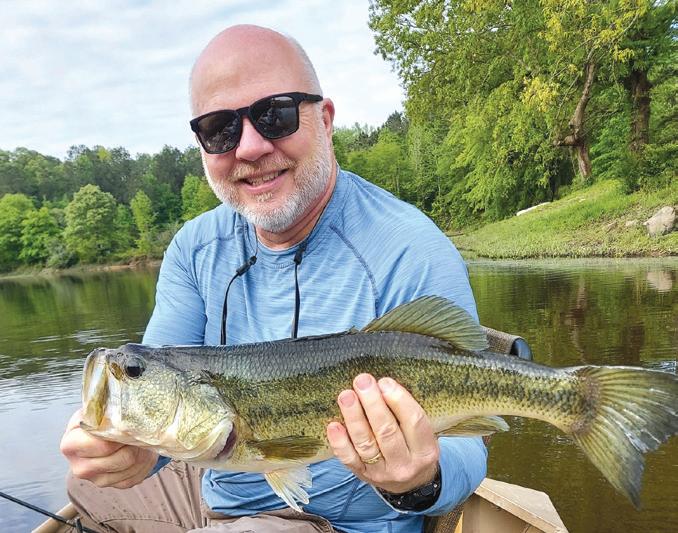

First MALTA meeting I remember - and I think it was the first somewhat formal meeting - was at the Holiday Inn at Powers Ferry and I-285. There were about 30 or 40 of us there and it was a great night of talking and laughing with our friends, and even our competitors. I think Dick Bare (Arbornomics) called me and asked me to attend.
It started a long association with MALTA rising through the membership to eventually become President. Attending that meeting and becoming involved in MALTA greatly influenced my career over the last 40 years.
Charlie King
King Green
MALTA President, 1997-1998
The early forming of our local trade organizations, MALTA, GTA and others, occurred during times of rapid growth for many companies and their customer bases.
There was great benefit to learning how to not undervalue and underprice the excellent work being done on commercial and homeowner properties.
Continuing education opportunities was the other early marker of these important times.
Mark Banta
Centennial Olympic Park MALTA President, 1999-2000
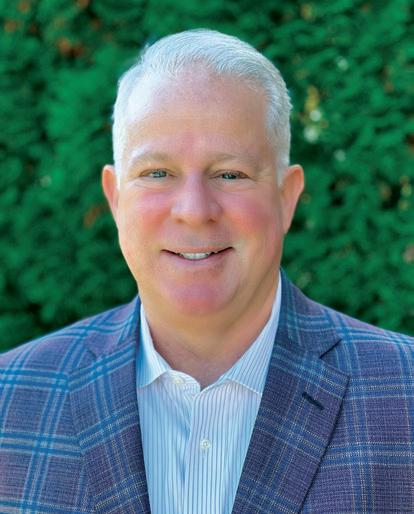
In the late 1980s, I was a young and highly driven salesman at TruGreen. It was 1989 and very early in my career when someone suggested I join MALTA to grow on a professional level. As a rookie, it sure was fun meeting all those iconic green industry professionals like Dick Bare, George Morrell, Charlie King, and Spence Rosenfeld to name just a few. Just a couple years later I ended up taking a sales position with Spence’s company, Arborguard, and discovered my love for trees.
Fast forward to 1993, I moved on and started what was then Caldwell Landscape Company. In 1999, I was honored with being appointed to a position on MALTA’s board of directors and served with Mark Banta, Becky McMinn, and Scott Chatham. I then served as president in 2002. Those years of service helped expand my knowledge of the green industry and helped me develop long lasting industry friendships. Shadowboxes decorate the walls of my office highlighting my years of board service. Among pictures of governors, senators, congressmen, lobbyists, and the like are articles written during my service.
I can honestly say that the 36 years I have actively participated in MALTA and GUAC, my career has flourished largely due to the influence my peers in this group have impressed upon me.
kevin caldwell
Caldwell Tree Care
MALTA President, 2002-2003
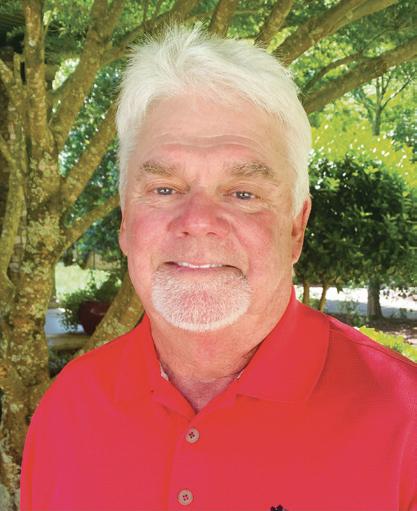
Back in the days when I couldn’t have been any greener, I met George Morrell and he insisted I join MALTA. He’d say, ‘You can gain a lot in this industry, but you need to give back a lot, too.’
George was very helpful to me when I was starting out. I never felt like we were competing – he was a great mentor. His willingness to give back, not just to help his company but to help the industry, was the philosophy that founded MALTA and has continued to make UAC so valuable.
RICK UPCHURCH
Nature Scapes
MALTA President, 2006-2007

It has been a privilege to be a part of MALTA/ UAC for over 30 years! I can still remember the first meeting I attended. Billy Killmer was the President and he owned Lifescapes, a company that I highly admired. I was impressed that he was willing to
not only donate his time to growing the professionalism of the industry but also willing to share his success with new members like myself. Billy’s example eventually led me to join the leadership at MALTA to pass it forward.
Mary Kay and her team have provided a strong and consistent foundation to enable the organization to continue to grow, flourish and add great value to the GA landscape industry.
ken thomas
Scapes
MALTA President, 2008-2009

MALTA and the Georgia Urban Ag Council has and always will have the landscape industry’s back when no one else will.
Rick Smith
The Pruning Guru MALTA President 2009-2010
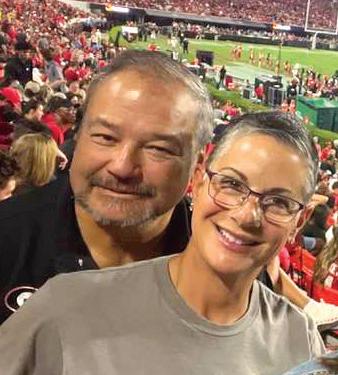
phil walters
Frank A. Smith Nurseries
I was the last president of MALTA and the first president of UAC. Being there to oversee the transition was insightful as well as challenging to meld all the sectors of the industry. What we created was better and more rounded than what we started with.
MALTA & UAC President, 2010-2012
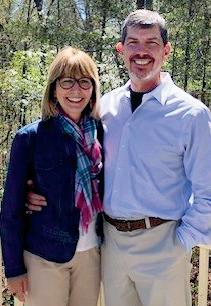
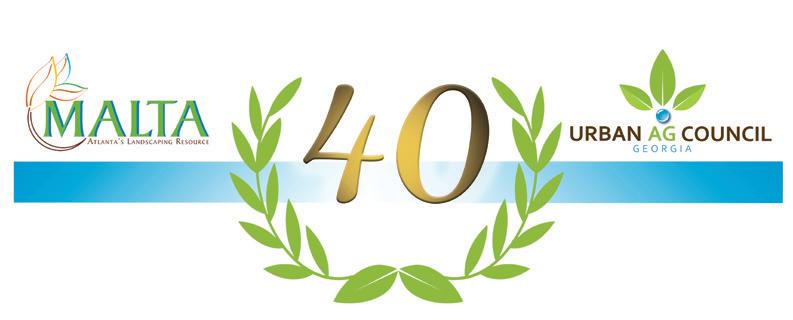


My memory of MALTA is as the birthplace of our state landscape association which included so many founders who created professionalism, growth and opportunity for generations to come. The efforts of these pioneers spanned an unimaginable volume of companies and leaders who have all benefited from their vision and dedication.
Teddy Russell
Russell Landscape Group UAC President, 2012-2013
}Serving as president of UAC during Covid was a great experience and opportunity to see companies and individuals work together. UAC supports a very diverse industry and group of people who make their clients’ dream gardens come true.
The time spent with MALTA and UAC have been some of the best years and experiences of my career. Many of the members have knowledge and experience that could not be absorbed in a lifetime. These individuals and the teams they have built should be admired and learned from.
Thank you for the opportunity to be part of a great organization and a group of individuals who have helped many others improve their lives and their businesses.
Todd Jarrett
Arbor Hill Nurseries
UAC President, 2016-2020
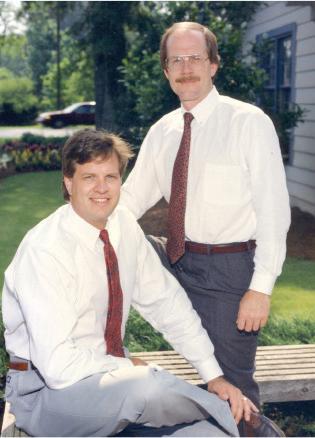
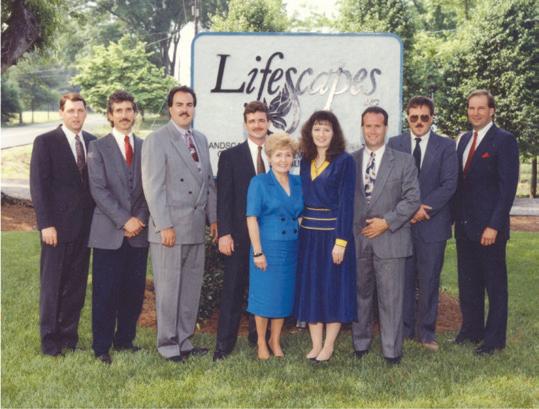
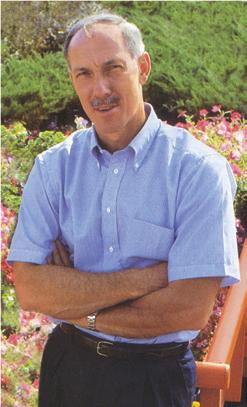


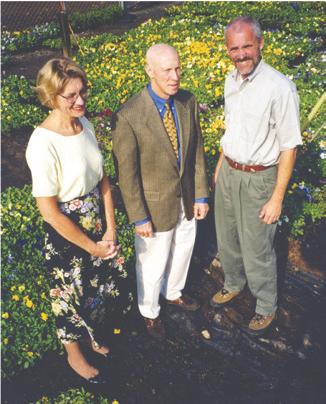
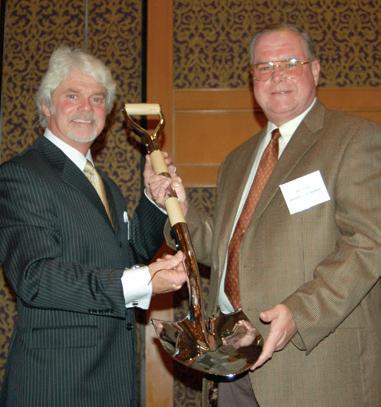

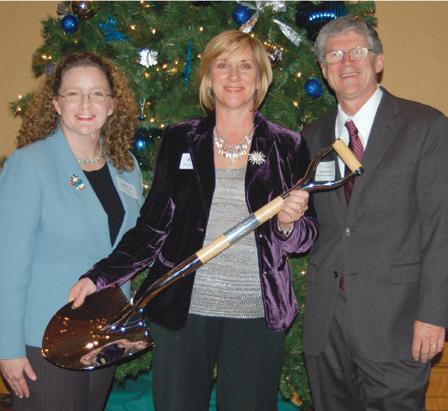

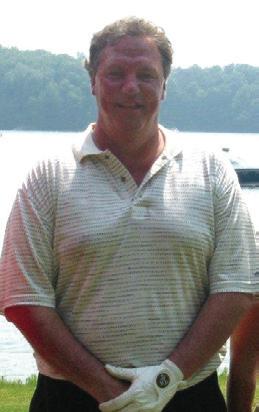
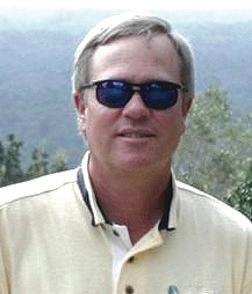


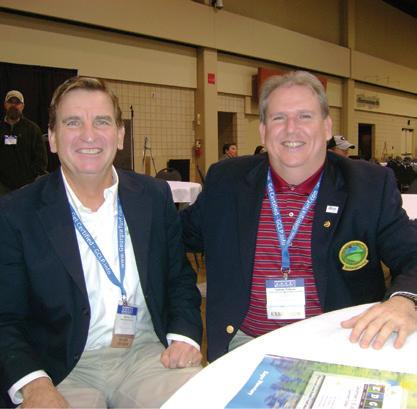

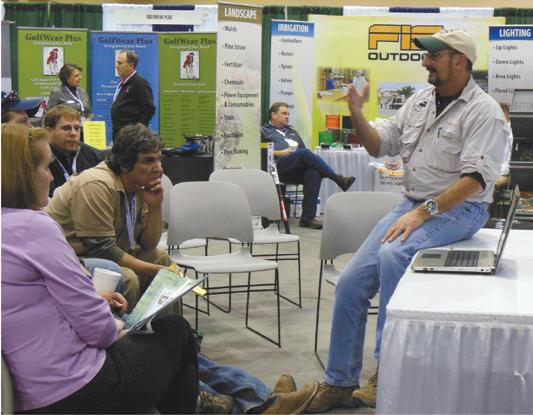

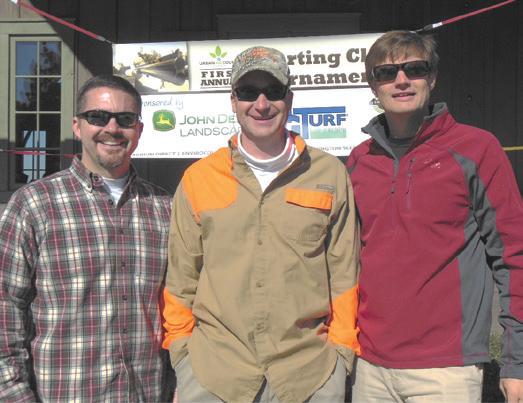
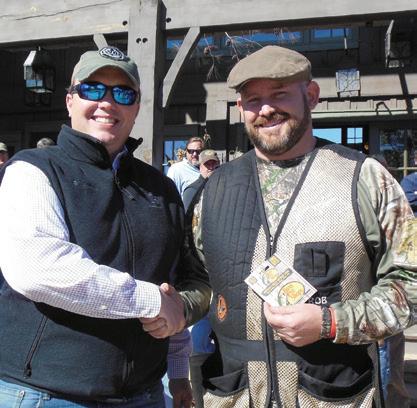
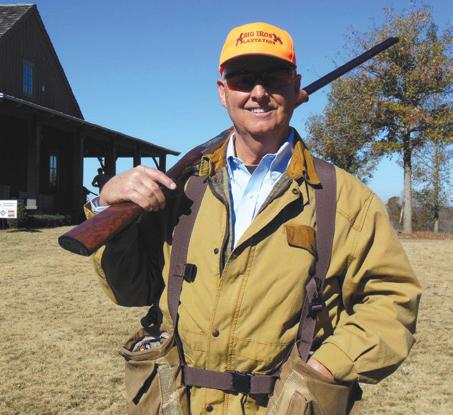
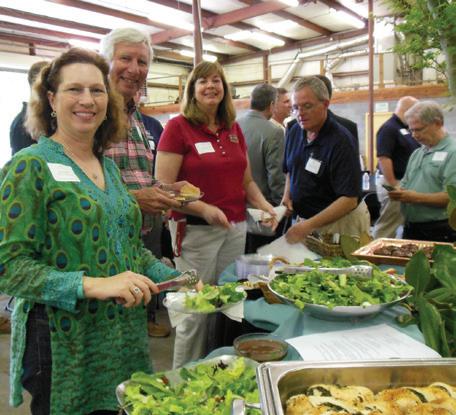
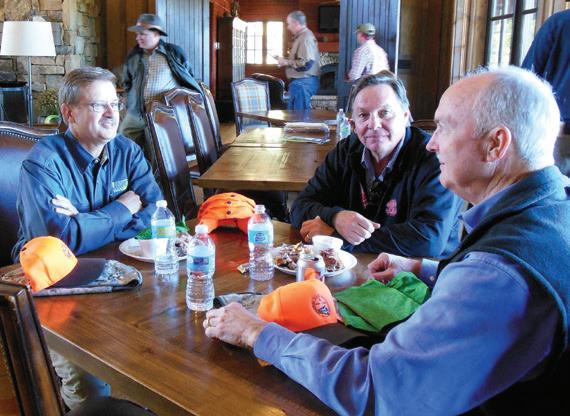
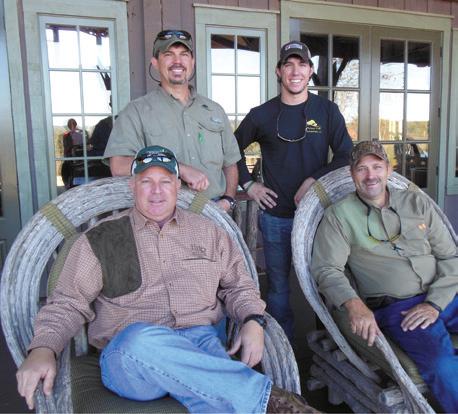



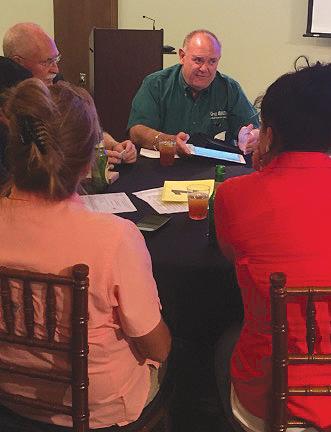
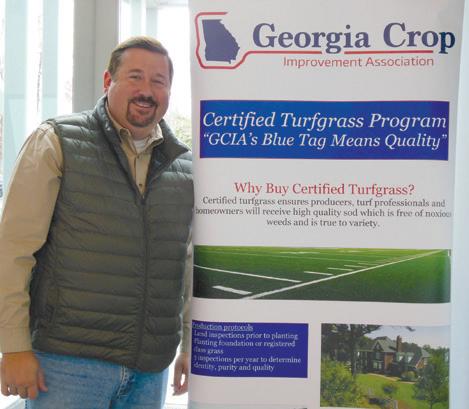
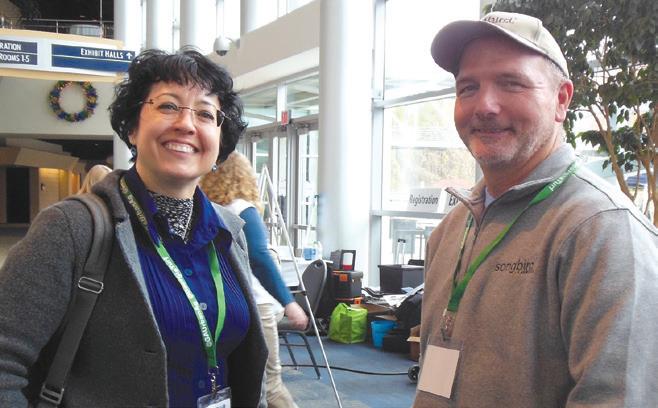
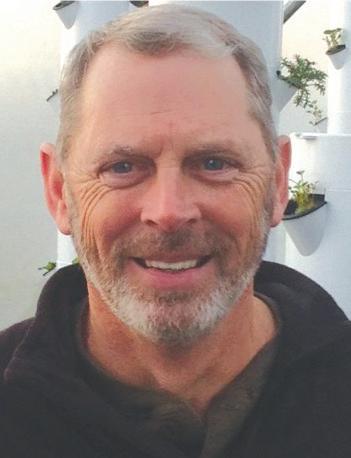
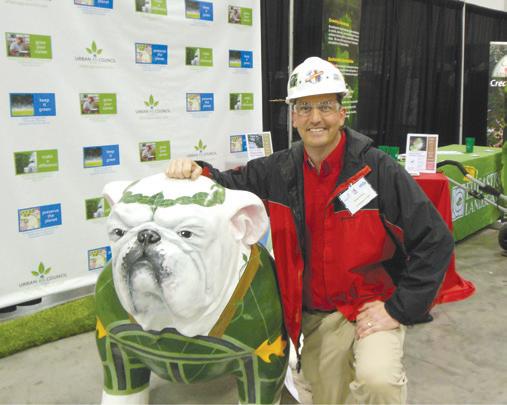
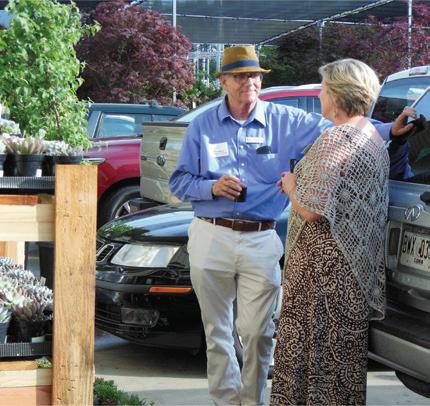
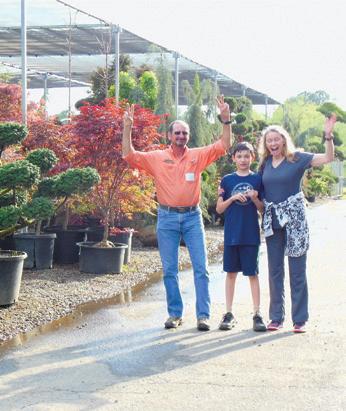

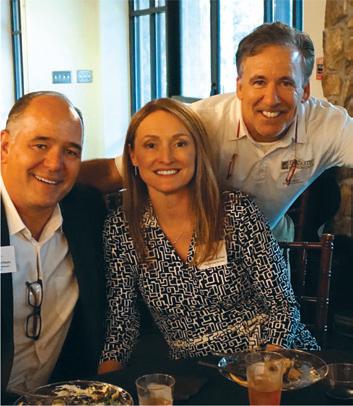
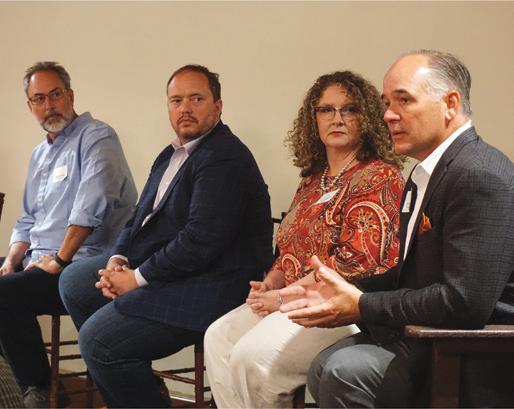
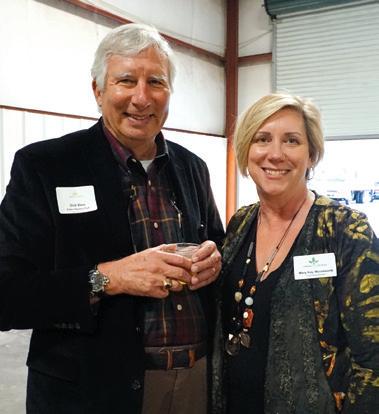




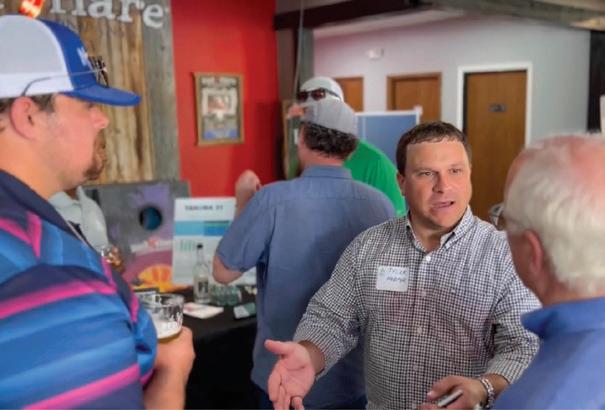

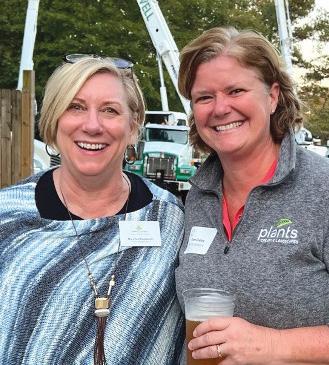



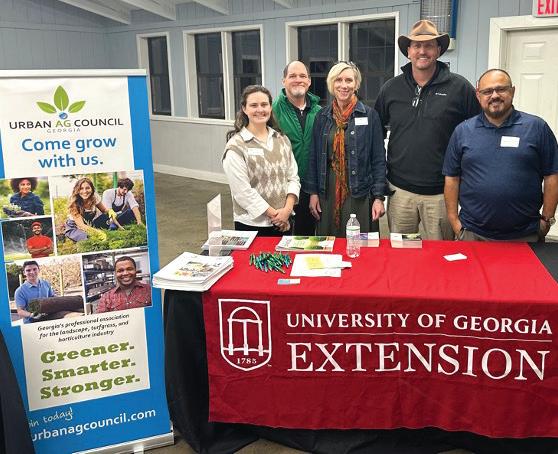
Take advantage of the summer months to capture photos of your projects when they are lush an full. But first, visit the GALA website to get all the info you need to get started on your entries.
4 4 4 4 4 4
Deadlines and general info
Mark your calendar now with GALA deadlines
GALA project categories
Make sure you know where your project fits Entry details specific to your project’s category
Rules of entry, judging criteria, and entry worksheet
Photo criteria
Guidelines and specifications for your entry photos
Success tips
Pointers to help you along the way GALA awards coaching
Sign up for weekly texts to keep you on track

While you’re on the GALA website, check out the 2024 winners and the blog posts of their projects:

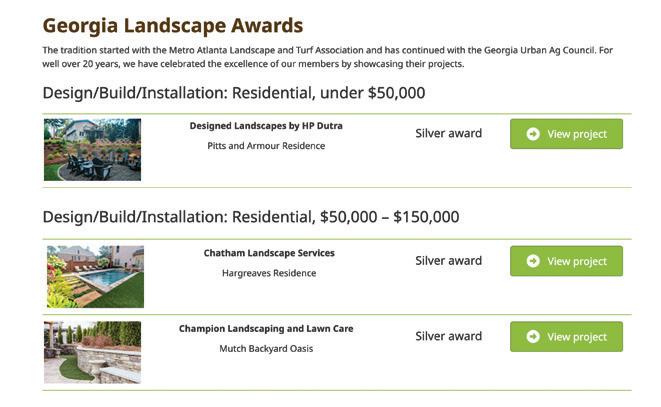
urbanagcouncil.com/gala-georgia-landscape-awards
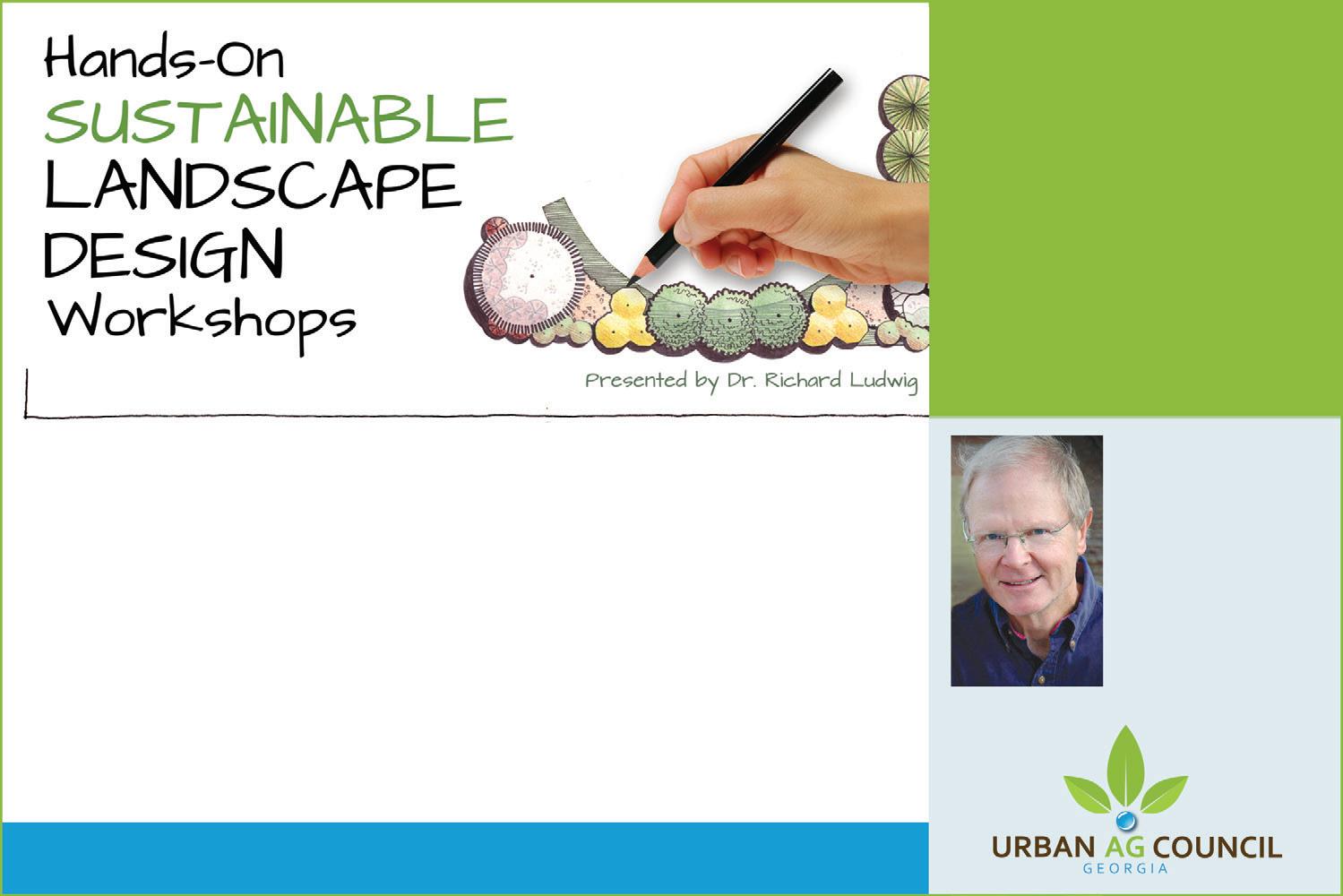

Make sure the people who LIVE around your business KNOW about your business
• Connecting your business with 25,000+ homeowners
• Print issue: direct mailed and distributed at over 300 neighborhood businesses
• Digital issue: distributed via email, social media and website/SEO marketing

Here’s what community business owners are saying about us
“I have had a great experience with Atlanta Best Media. We have advertised in the magazine but I believe when doing the print you are also in the digital version that can be found online. We got a call literally the day after the magazine was distributed. I know that’s not always how it works but for us it did and paid for the whole thing which was amazing! I know someone else who advertises with them and has for years and they have had great success. I don’t think either way digital or print you can go wrong with this company!”
—Priscilla Sharp, Sharp Electrical

“We do a combination of print and digital. I do believe the print helps, especially for name recognition. Our Google Analytics shows a lot of direct traffic from our website, which must be our print. Dawn has been awesome to work with and they offer the digital platform as well. I do believe we have a good ROI with their magazine.”
—Andrea Zare, Classic Blinds and Shutters

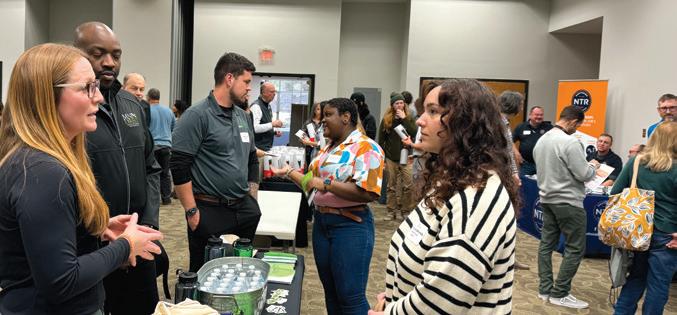
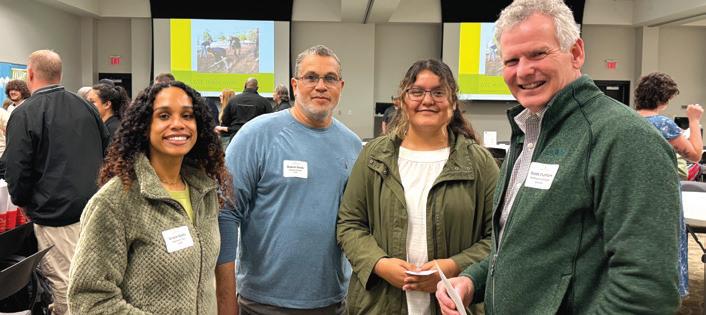

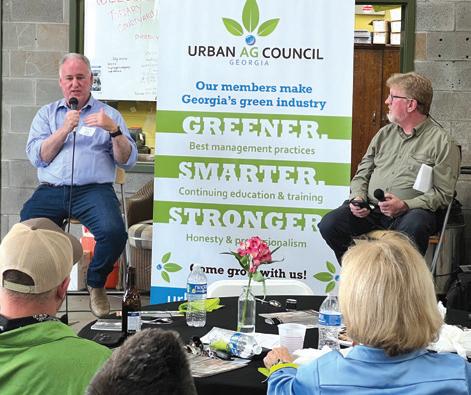
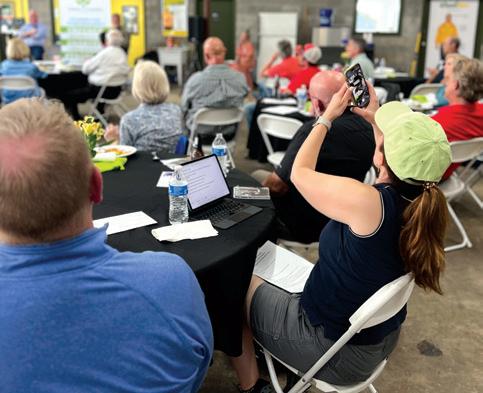
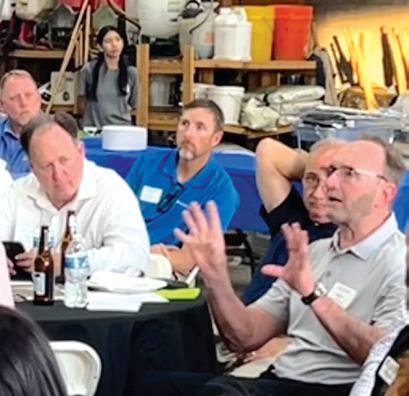
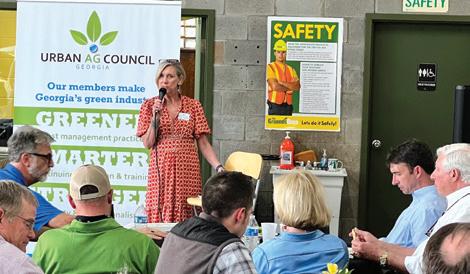

GALA awards ceremony & 40th anniversary celebration | March 19 | Piedmont Park

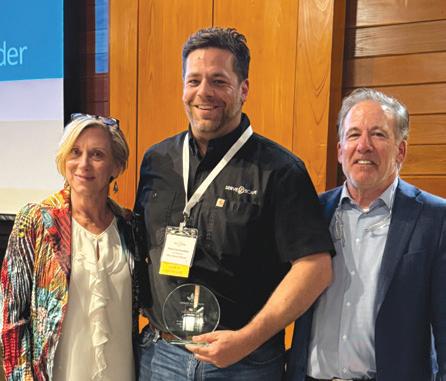
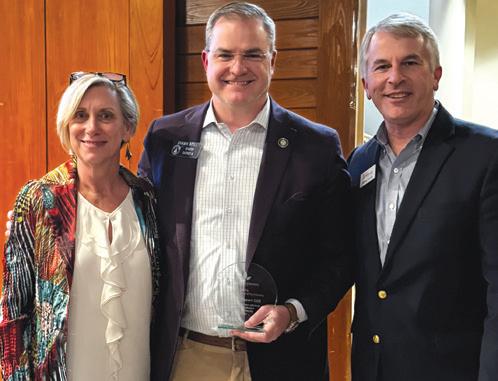
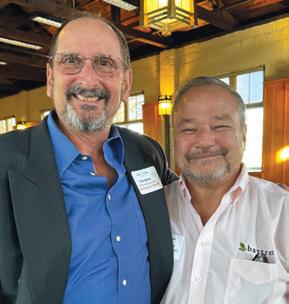
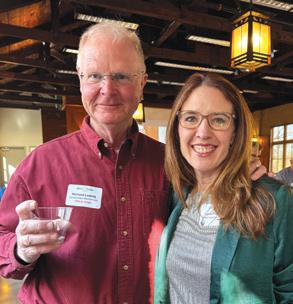

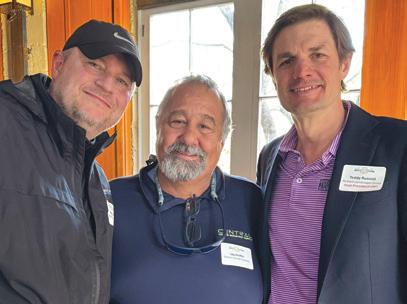
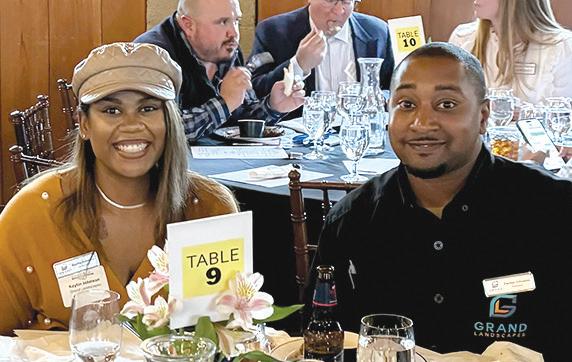
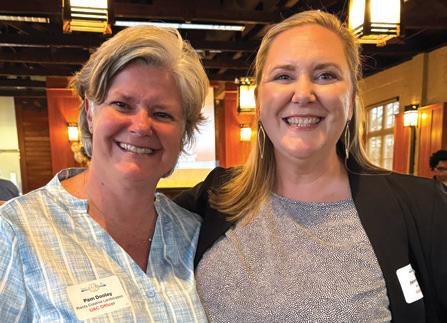


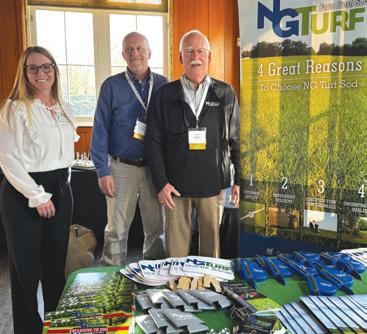
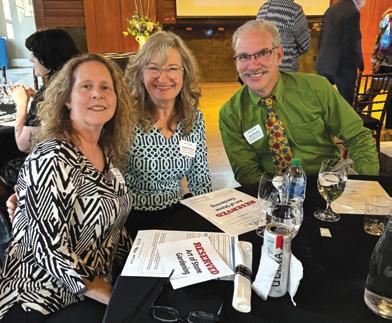
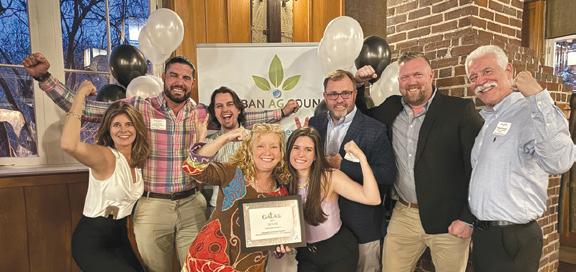
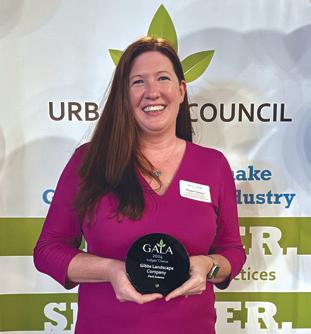
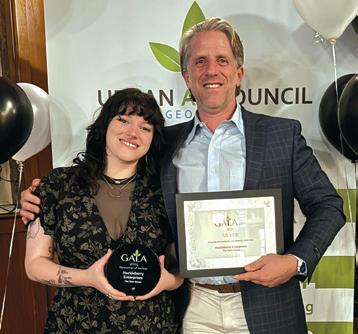
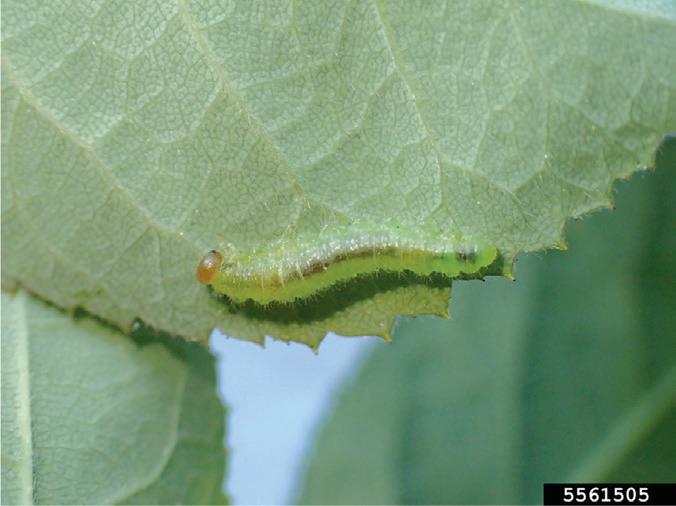

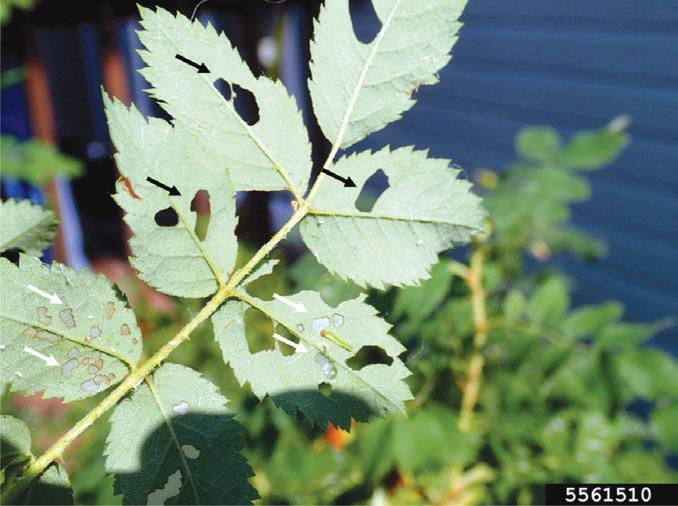
Bristly roseslug sawfly, Cladius difformis (Fig. 1), is a common species of roseslug in Georgia. The larval stages feed on rose leaves and cause extensive damage. Native to Europe, the bristly roseslug sawfly was accidentally introduced to the continental USA, a few decades ago. This roseslug is particularly problematic on rose shrubs in ornamental landscapes. Another roseslug common in the southeastern USA is the common or American roseslug sawfly, Endelomyia aethiops. The curled rose sawfly, Allantus cinctus, is not common in Georgia. These roseslug species are not discussed in this article in details.
Females of bristly roseslug sawfly insert eggs into the leaf petioles mostly in three rows. The eggs hatch, and the slug-like tiny larvae move to the lower surface of leaves and feed on the epidermal layer. The larvae of bristly rose slug sawfly have bristle-like hairs on the sides and back, and thus, they are referred to as “Bristly” (Fig. 1); however, it is not readily seen with the naked eye. The late-stage larvae are about ¾ inch long and appear lime-green with the orange head capsules. When ready to pupate, the late stage of larvae drop from the plant and pupate inside a cocoon in the soil. In some cases, they pupate attached to a plant. The emerging adults are black wasps about ½ inch long (Fig. 2). The antennae of females are narrow and elongated (Fig. 2), whereas the base of male’s antennae are comb-like.
Bristly roseslug sawfly undergoes multiple generations during the growing season. Rose shrubs are susceptible to damage from the spring to the end of fall. Each new generation produces extensive defoliation as the density of roseslugs increases through the growing season. The overwintering stage of bristly roseslugs is pupae, and they overwinter inside earthen cells. The American roseslug and common curled roseslug have one and two generations, respectively, each year.
The bristly roseslug larvae are the destructive stages of bristly roseslug sawfly. The early instars of bristly roseslug sawfly scrape the surface from the underside of leaves without feeding on the entire tissue. This feeding behavior leaves a layer of epidermal tissue on the upper leaf surface, which appears as white patches or spots referred to as “windowpanes” (Figs. 3 and 4). Eventually, the white areas collapse, and holes appear on the leaves.

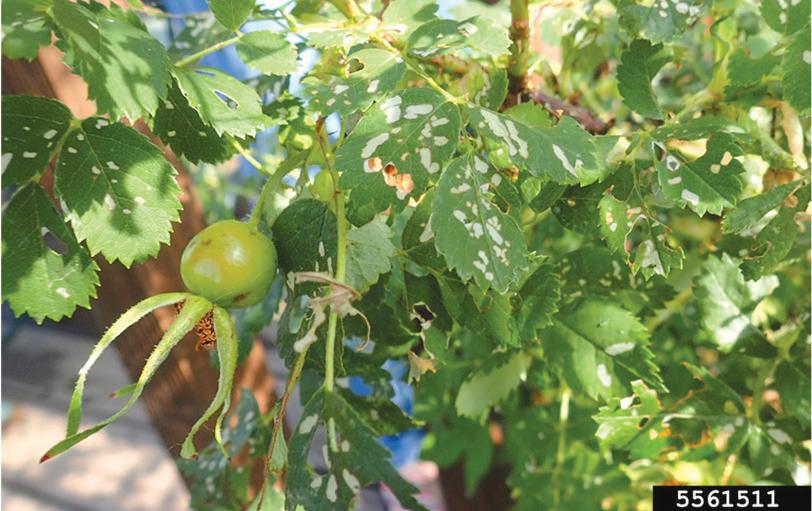
As they grow larger, they feed on the interveinal areas of leaves that appear “skeletonized” with only the mid-rib and veins remaining (Fig. 5) because late stages of larvae feed from inside and margins of leaves. This feeding initially causes large holes. Leaves drop when infestation is high (Fig. 5).
Bristly roseslug sawfly primarily attack wild and managed roses.
Feeding activity can be monitored using visual evaluation. On roses, feeding initiates in April and continues until October before frost occurs. Larvae are found on the lower side of the leaves.
Cultural practices, such as hand-picking larvae and destroying them, can help reduce roseslugs on rose plants. Irrigating plants with high water pressure thrice a week could dislodge some roseslugs off from affected plants. Because bristly roseslug sawfly pupates in earthen cells, tilling the soil around or between rose plants multiple times during the growing season may destroy pupae in soil. Bristly roseslug sawfly overwinters as pupae. Tilling practice during late fall may kill the overwintering pupae and reduce their densities in the following growing season. There is limited information on effective biological control agents, such as predators and parasitoids on bristly roseslug larvae.
For larval control, horticultural oils, neem oil, and insecticidal soap are effective. However, these products do not have residual activity, so repeated applications may be necessary for desirable control. Foliar application of insecticides, such as pyrethroids (cyfluthrin, deltamethrin, lambda-cyhalothrin), neonicotinoids (acetamiprid, dinotefuran, imidacloprid), spinosad,
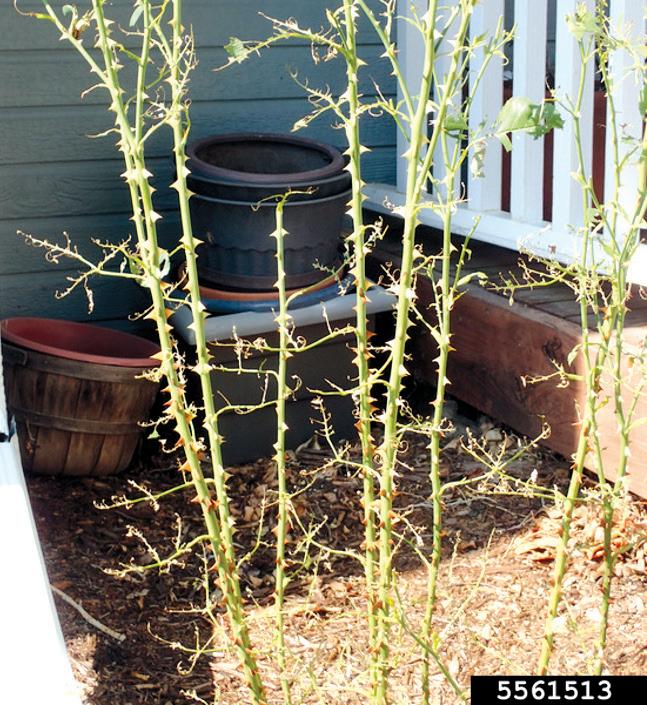
skeletonization and leaf drop
spinetoram+sulfoxaflor, and chlorantraniliprole, are also effective on larvae. Drench application of dinotefuran and imidacloprid in the spring can reduce larval densities. Make sure insecticide solution is directly applied to the soil after removing the mulch (if applicable). It’s critical to follow the label instructions before applying any chemical insecticides, as improper applications can cause insecticide drift and unintended exposure to non-targets, including pollinators. It’s important to avoid applying insecticide directly to plants in bloom to protect pollinators. BT (Bacillus thuringiensis) based products and their strains are not effective on bristly roseslug.

UGA Turfgrass Research Field Day + UAC exhibitor tradeshow
DATE: Wednesday, August 7
PLACE: UGA Griffin Campus | 1134 Experiment Street | Griffin GA 30223
PLUS: Educational sessions from 1:30 pm - 2:30 pm - choose one:
> Pesky Critters in the Landscape and How to Manage Them
> Insect Identification and Pesticide Safety
1 hour GA Cat 24 credit applied for

Sustainable Landscape Design Workshops
DATES: Thursday, August 15:
Creating the Ultimate Landscape Design: Stunning and Sustainable
Thursday, October 10:
Landscape: A Nature-Inspired Approach
Thursday, December 12:
Planting Design for the Sustainable Landscape
PLACE: 310 E. Crossville Road | Roswell GA 30075
TIME: 9:00 am - 4:00 pm (lunch on your own 11:30 am - 12:30 pm)
COST: Per class: UAC members: $250 | Non-members $325
Registration limited to 20 students per workshop - register online now!

Fall into fall at the Woodstock Arts Event Green
Speaker: Jeff Harkness, 3PG Consulting
DATE: Tuesday, September 24
TIME: 5:00 pm - 8:00 pm
PLACE: 111 Elm Street | Woodstock, GA 30188



Sustainable landscape design and maintenance: Make money AND satisfy your clients
Speakers: Dr. Richard Ludwig and Eric King, ASLA
DATE: Tuesday, October 8
TIME: 5:00 pm - 8:00 pm
PLACE: 310 E Crossville Road | Roswell GA 30075
UAC Sporting Clays Tournament
Clay shoot | Win prizes | Eat BBQ
DATE: Thursday, October 31
TIME: 9:00 am - 1:00 pm


PLACE: Blalock Lakes | 4075 New Corinth Road | Newnan GA 30263
Register as a team or an individual! Sponsorships available!

With over a decade in development and research, Innovation® Zoysia’s cutting-edge qualities beat zoysias of the past. Deliver THE superior zoysiagrass to your clients.
NWS and the CDC team up to create new heat index
Information taken from www.weather.gov/safety/heat-index
Each year, extreme heat exposure results in numerous deaths and illnesses. As climate change intensifies, extreme heat events are becoming more frequent, more severe, and longer. Issuing alerts and health advisories before or during periods of extreme heat can save lives. These services are supported by weather and health agencies involved in emergency preparedness.
Early warning systems and action plans have been shown to reduce risks of heat exposure. Guidance about how to prevent health problems from heat exposure should be built around local epidemiologic evidence, but such evidence is often not available.
CDC (Centers for Disease Control and Prevention) and the National Weather Service (NWS) worked together to identify temperature thresholds and develop an alert service that issues heat forecasts using data and methods that are relevant from a public health perspective.
The experimental NWS HeatRisk is a color-numericbased index that provides a forecast of the potential level of risk for heat-related impacts to occur over a 24-hour period.
That level of risk is illustrated by a color/number along with identifying the groups potentially most at risk at that level.
Each HeatRisk level is also accompanied by recommendations for heat protection and can serve as a useful tool for planning for upcoming heat and its associated potential risk.
Based on the NWS high resolution national gridded forecast database, a daily HeatRisk value is calculated for each location from the current date through seven days in the future.
HeatRisk serves as another NWS tool that can be used to protect lives and property from the potential risks of excessive heat, being especially useful for those who are more easily affected by heat or those who provide support to those communities of heat-vulnerable individuals. We know that weather extremes generally affect historically underserved vulnerable communities the most, and HeatRisk ensures that communities have the right information at the right time to be better prepared for
upcoming heat events. HeatRisk has been available in the Western United States since 2014 and was expanded across the contiguous United States in 2024.
Extreme heat can make everyone uncomfortable, but heat commonly affects certain groups, typically identified as heat-sensitive or heat-vulnerable, at lower thresholds than other populations. These groups face a higher risk of heat-related illness and negative impacts than others. Some of these groups include:
> The elderly and the very young
> People experiencing homelessness
> Those on certain medications and/or those with preexisting conditions which make them more sensitive to heat (your doctor can let you know if this is you)
> Those working outdoors -- especially new workers, temporary workers, or those returning to work after a week or more off, along with workers working indoors in a non-cooled space
> Those exercising or doing strenuous activities outdoors during the heat of the day - especially those not used to the level of heat expected, those who are not drinking enough fluids, or those new to that type of activity
> Those without a reliable source of cooling and/or hydration - this includes otherwise healthy individuals who are attending outdoor activities and are exposed to the heat and may not recognize the early symptoms of heat stress
> Those not acclimated to the level of heat expected - especially those who are new to a much warmer climate
> Those sensitive to poor air quality, which can be exacerbated by heat waves
> Those living in low income communities
> Some economic sectors are also affected by increasing levels of heat, such as energy and transportation
HeatRisk takes into consideration:
How unusually above normal the temperatures are at your location (is it warmer than the top 5% of hottest days in the period of record for this date?)
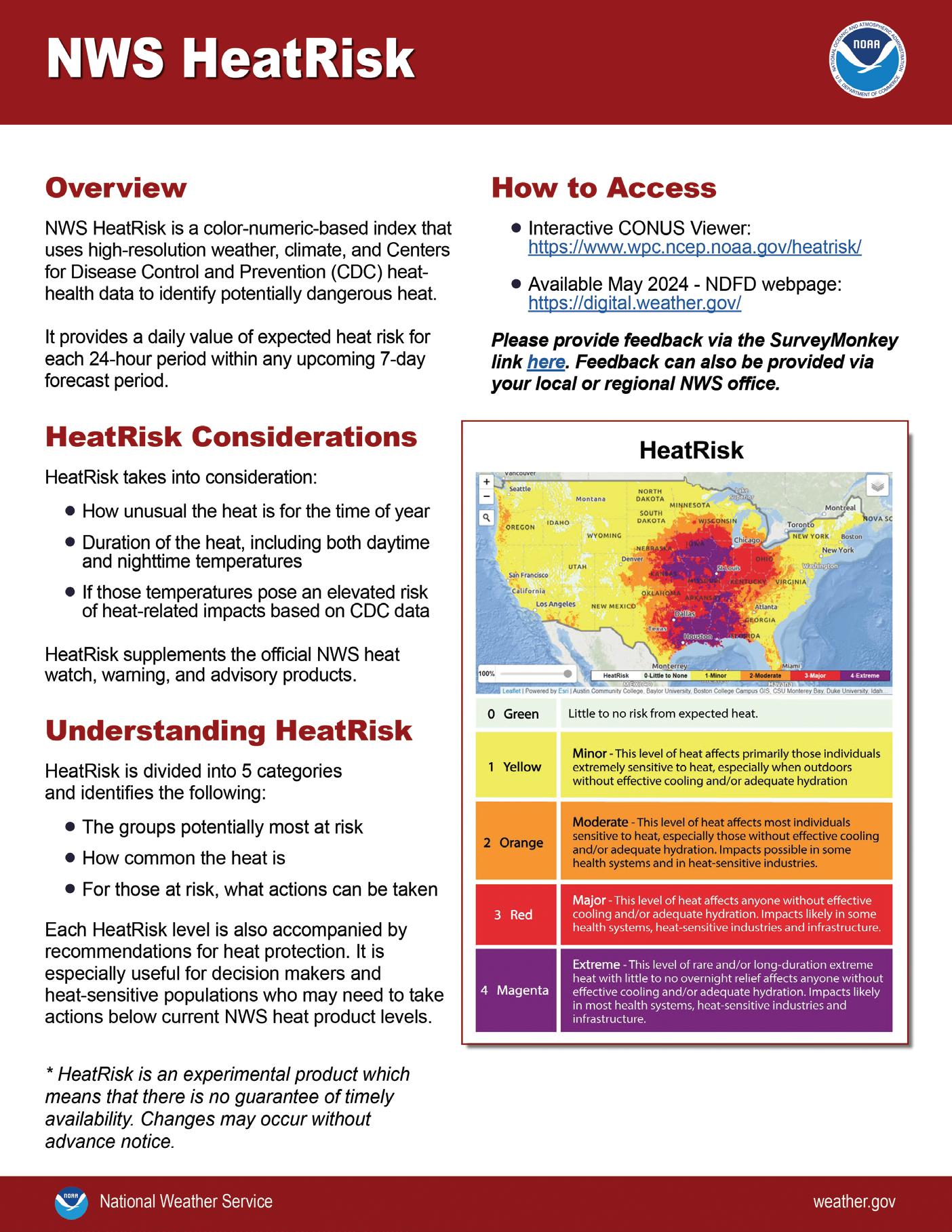
View this fact sheet online: www.weather.gov/media/safety/NWS-HeatRisk-X3-2024.pdf
The time of the year (for example, is this early season heat that you likely haven’t become used to, typical mid-summer heat, or late season heat that you may have become more used to?)
4 4
The duration of unusual heat (for example, are temperatures overnight at levels that would lower heat stress, maintain it, or will unusually warm overnight low temperatures add to heat stress into the next day?)
If those temperatures are at levels that pose an elevated risk for heat complications, such as heat stress, based on peer-reviewed science and heathealth thresholds supported by the CDC national data sets.
You may wonder where humidity is in this process. We all know that humidity plays a significant role in making warm temperatures feel even more oppressive. Unfortunately, there are not an adequate number of weather stations across the country which report humidity values for a long enough period of time to be used directly in the HeatRisk approach, but there are many more stations that report temperature. Because of this, we use well-known physical relationships of temperature to dew point temperature (humidity) to approximate the role of humid air. This is done by considering:
> How unusually warm the overnight temperatures are (more humid air usually leads to warmer overnight low temperatures than are typical for an area, even traditionally humid areas).
> How large the difference is between overnight lows and daytime high temperatures (the difference tends to be larger the less humid the air is).
All of the factors listed above are used to create daily dynamic temperature thresholds to identify what is truly unusual and at levels that would result in increased heat stress and heat risk. These thresholds differ from one location to another, especially between cities and rural locations and in areas where elevation changes. As appropriate, these thresholds also change based on the day of year so that they are lower in the spring than in the summer, for example. The official NWS gridded forecasts for high and low temperatures are then compared to these dynamic temperature thresholds at each location, and the forecast temperatures are matched to their appropriate HeatRisk color/level. Information from both the overnight lows and daily highs are combined to create the final output: the 24 hour HeatRisk value.
This information is available for the entire upcoming seven-day period and provides additional information to base heat-related decisions on, not only for human health, but for the many sectors that are also affected by heat. The experimental HeatRisk service is just one more way the NWS is working toward ensuring that communities have the right information at the right time to be better prepared for upcoming heat events.
View the interactive HeatRisk map online: www.wpc.ncep.noaa.gov/heatrisk





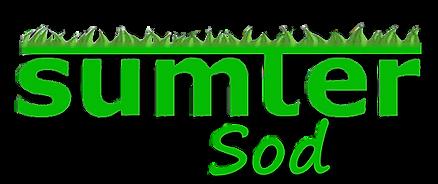

With over two billion monthly active users, you already know Instagram can do wonders not only for big companies with millions of fans but also small businesses. No matter your business size and niche, more and more companies are giving Instagram marketing a try. While simply setting up an account can boost your credibility, it’s not enough to help you capture your audience’s attention in such a busy marketplace.
Despite its origins as a square-photos-only social media platform, to keep up with its competitors like TikTok and YouTube, today Instagram prioritizes video content, especially Instagram Reels. This means the Instagram algorithm will recommend videos to a larger audience resulting in better reach and engagement versus photos.
Instagram has notably changed through the years, not only the platform itself but also how users interact with it. Instead of posting regularly on their main feeds, people post more Stories and consume more videos.
While the prioritization of video content on Instagram was famously met with resistance, users have quickly embraced the change. According to Instagram statistics, people spend 80% more time watching videos on the platform, and video content gets 21.2% more engagement than images.
Plus, Instagram Reels usage increased by over 57% yearover-year since its launch in 2020. Today, Reels easily outperforms all other content types in terms of reach and impressions, making it the obvious content format of choice for marketers and the best way to be monetized.
Interestingly, Reels posted by accounts with fewer followers (up to 500) have a significantly higher reach than more popular accounts with thousands of followers.
As a small business, your priority is to build your following and get your name out there. Posting more videos on Instagram can help you reach an audience beyond your current following with minimal spending. If you haven’t considered posting more videos, here’s why you should:
4 4 4 4
Drive user engagement. Engagement is one of the most important indications that your content resonates with your audience. It shows people are stopping to interact with your content. Simply posting more Reels can help drive up your user engagement, as it is considered the most engaging content format on the platform, with an average engagement rate of 1.23%.
Stay ahead of competitors. Resisting Instagram’s shift to video will only set you back. Not only will you be hidden in obscurity by the algorithm, but you will also have a more challenging time capturing your audience’s attention. Side-by-side with static content, video is clearly more captivating.
Spice up your Instagram marketing strategy. Videos are a great way to tell stories. You have more space to complete your narrative, and the format alone allows for more ways to get creative. Changing up your content with videos can also keep things more dynamic and exciting.
Educate leads about your business. The first step when it comes to lead generation via social media is to create general videos that tell a story about your company. Those watching your videos can be considered top of the funnel (TOFU) leads. While they are not ready to engage with you in a deep and meaningful way, they’ll want to know what your business is all about.
Ready to make good use of Instagram videos? Check out these seven tips for small businesses.
Draw inspiration from your competitors. All great marketing campaigns are backed up by extensive market research, and the best place to begin is your competitors’ profiles. This should include fellow small businesses like yours and bigger, more successful brands that you aspire to be more like in the future.
Look at competitors’ pages and see what types of videos are performing best. Is there a gap in the market for specific types of videos that aren’t being done just yet? Take inspiration from other pages, and think of ways to do what they’re doing, but better.
Using your competitors’ pages as references can also help you think of ways to differentiate yourself from them. For example, if you’re a small restaurant and your competitor is known for posting flawless, professionalgrade clips of their cooking and plating process, you can choose to post more casual videos that focus more on the people behind the food.
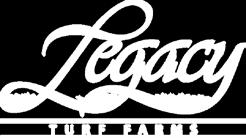
You can also draw inspiration from big-name brands dominating Instagram video creation. For instance, small restaurant brands may not view Michelinrated restaurants as direct competitors. However, understanding how they market their restaurant on Instagram can help you achieve Michelin-level content.
Get creative with AI-powered video editing tools. In the past, posting videos meant businesses had to hire a videographer, an editor, and a whole team of creatives.
With more apps and AI now readily available, all you need is a decent phone for shooting. Anyone can create high-quality video content without prior experience.
You don’t even have to think of transitions or syncing your video with music. Today’s AI apps are so powerful that you can upload your video and apply your desired filters and effects or let the app do the work for you. Some AI-powered tools are so advanced that you can feed it raw, unedited footage, and it will do the job of

Happy Customers, the first time. Get it right with a quality sod that will root and thrive immediately
Uses less water than any other bermuda Up to 18% less water usage than TifTuf
Beautiful, deep bluegreen most of the year Golden in dormancy


extracting relevant moments, adding trending audio, and optimizing it for publishing. These tools enable marketers to produce videos at a faster speed than ever before.
For example, you can use a video editing tool like Videoleap that has various ready-to-go templates that you can quickly repurpose with your own content. Lightricks, the developers of Videoleap, have been integrating several AI features into their apps over the past year, making it easy to transform your visuals and even video clips into different styles.
Experiment with different Instagram video formats. The popularity of Instagram videos is growing, so the platform offers different video formats for all needs and wants. Experimenting with different formats can help keep your Instagram page exciting and gives you more ways to interact with your audience.
When creating videos for your small business, you can change up your content with in-feed videos, video Stories, Instagram Live, and GIFs.
Use Instagram Stories for its interactive stickers that can help you learn more about your audience. Combining videos with Instagram Stories’ interactive poll stickers is a great way to stand out and encourage viewers to engage with your content longer.
Many brands have achieved notable results with the polling stickers ads, with Dunkin’ reporting 20% lower costs per video view and Next Games hitting 40% more app installs.
Use Instagram Live for important announcements and for bumping up engagement. Live videos don’t follow the Instagram algorithm and are automatically placed ahead of all Instagram Stories on your followers’ feeds. If your followers have their notifications switched on, they will even get notified whenever you go live.
Remember that Reels are currently the most popular video format on Instagram, so it’s a good idea to hop on the bandwagon and get great results in engagement. What’s more, it’s easy to schedule Instagram Reels and get in front of your audience when people are the most engaged.
Experimenting with videos also means testing various creative executions, riding on trending audio and content, and having fun.
Go deep with explaining your products/ services. People love learning new things over the internet and especially through videos. As revealed in the report by Wyzowl, 96% of people watch explainer videos to learn more about products or services. Your
Instagram profile should also address this desire for learning, especially if your products need some technical knowledge or application.
Think of possible questions your customers may have and provide the answers through how-to videos and product explainers. Tutorial videos can answer frequently asked questions and make learning more about your products or services entertaining and share-worthy.
Household appliance brand Dyson regularly posts informational videos about its products, explaining their different functions in an eye-catching and entertaining way. By showing how its products work, potential customers can learn more about its functions and discern whether they want to buy it.
The best thing? Small businesses can rely on generative AI to produce explainer captions tailored towards specific audiences without spending much time, budget, or effort. You can also create an email account and send these videos as part of your email marketing campaigns.
Encourage customers to create UGC videos. User-generated content (UGC) is the modernday word-of-mouth. People trust UGC more than they do brand-created content. Encouraging UGC videos can increase customer trust and push those in the consideration stage to make a purchase.
UGC videos can also help your brand appear more relatable, as it will be easier for your audience to identify with your customers versus using hired talents. Plus, since customers will have to post the content on their pages, you get access to their followers, who are likely to be interested in your brand and get views.
The easiest way to encourage UGC is by incentivizing your customers. Reward them with small freebies or discounts in exchange for a video that you should be allowed to repost.
Travel and Resort rental group Hilton Grand Vacation started a UGC campaign called “How do you HGV,” which encouraged customers to share photos of their vacations with the hashtag #MyHGV with the chance to win Hilton Points.
Years after the campaign launch, #MyHGV has become a regular hashtag customers use to get featured on the Hilton Grand Vacations Instagram page.
Work with Instagram influencers on video creation. Influencer-created content is like UGC but with amplified benefits. Since influencers have their own large audience who trust their recommendations, a feature could quickly boost your following and conversions.
Today, social media followers trust influencer endorsements as much as recommendations from their real-world friends.
Choose an influencer with your ideal target audience and whose style meshes well with your brand. Once your influencer makes a video, ask him or her to share it on the profile to boost reach and repost it to your business account to gain trust.
To ensure that both parties meet all deliverables and expectations, ask an influencer to sign a professional videography contract. It can protect your small business and help to make sure that the influencer delivers the promises on time.
Reach a wider audience with Instagram video ad campaigns. While posting organic Reels can get you in front of relevant audiences with zero spending, setting a budget for video ad campaigns can help you reach more people and control who sees it.
Relying on Instagram’s algorithm and organic posting is a guessing game. You can’t be certain if or when your post will be seen. Through ad campaigns, your videos can appear on the Discovery page, in-feed, and on Instagram Stories. Plus, paid ad campaigns help to achieve business goals faster. Whether you want to boost brand awareness, generate leads, drive traffic, or even convince viewers to buy, Instagram ads are here to help.
When you use videos in your Instagram ad campaigns, you can get even better results. For example, SharbatlyFruit made an emotional video for its Instagram ad campaign to celebrate Saudi National Day in 2020 and boost brand awareness. With the mix of videos and stunning visuals, the video ad campaign caught the audience’s attention and helped to reach 2.8 million people and get 3.8 million video views over 3 days. You can always use Instagram analytics to get deeper insights on your video ad performance and understand your audience better.
Instagram video marketing can bring results for small businesses. Simply posting more videos can boost your engagement, help you stay ahead of the competition, and spice up your current marketing strategy.
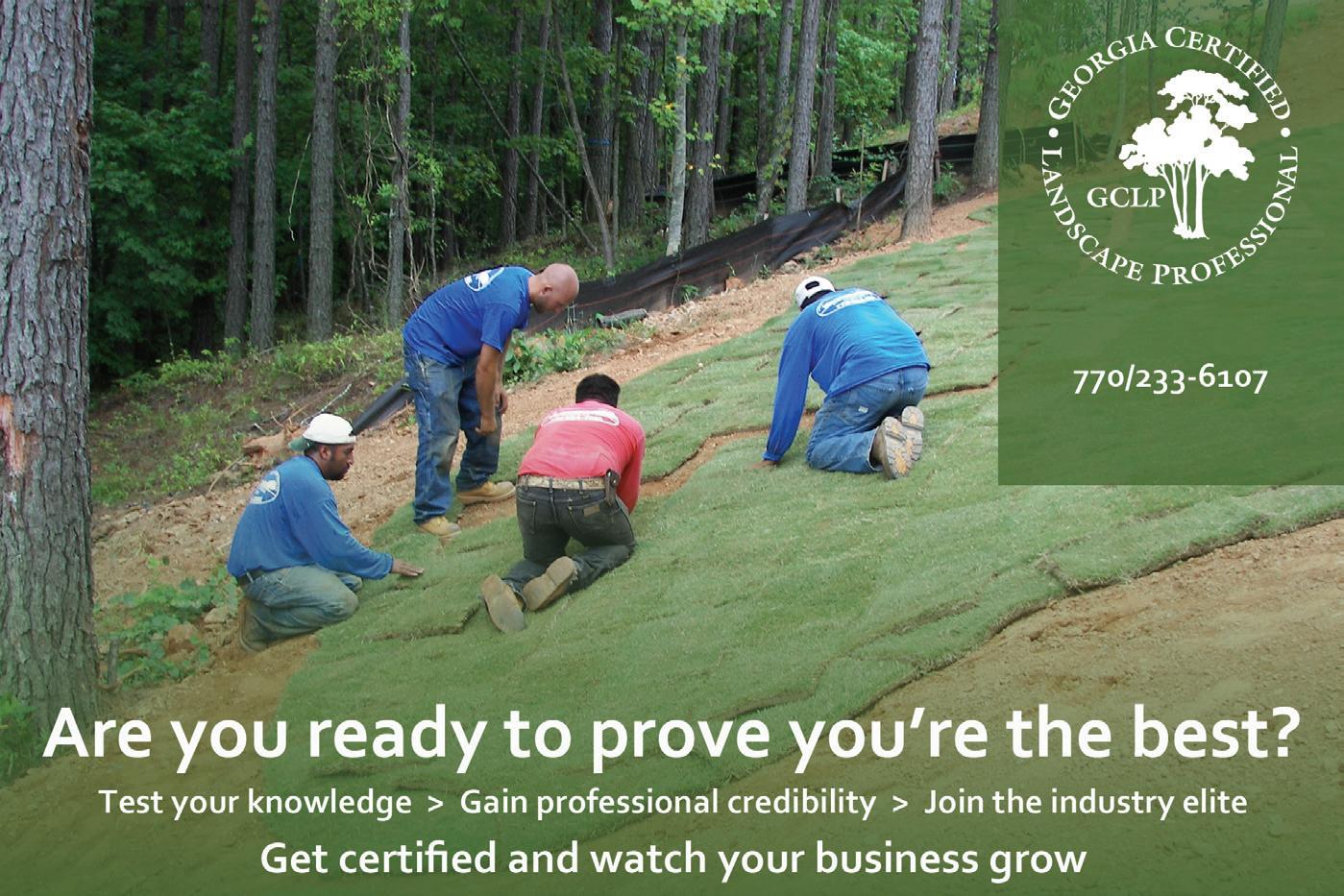

UAC and our insurance partner, Snellings Walters Insurance Agency, have teamed up to create Safety School, a toolbox of information businesses can use to conduct safety training. Below is training content, along with a quiz for attendees. Log in as a member to the UAC website (urbanagcouncil.com) to download the PowerPoint presentation for this topic, along with the content in Spanish.

Objective: To explain the safe storage and use of flammable and combustible liquids. This guide is based upon Occupational Health and Safety Administration (OSHA) Standard 29 CFR 1910.106: Flammable and Combustible Liquids.
A flashpoint is the minimum temperature at which a liquid gives off enough vapor to form an ignitable mixture in the air.
> A flammable liquid (Class I liquid) is any liquid that has a flashpoint less than 100º F.
> A combustible liquid (Class II and III liquids) is any liquid that has a flashpoint equal to or greater than 100º F but less than 200º F.
Some of these materials include, but are not limited to, gasoline, kerosene, paint, paint thinners, propane, and acetylene.
It should be noted that the actual liquid is not flammable, rather it is the vapor that is formed as soon as the container is opened. This is why it is so important to keep flammable liquids properly contained and to follow correct procedures when handling them.
Most flammable liquids are volatile; that is, they evaporate quickly and reach a concentration in the air that could lead to an explosion. Read the Material Safety
Data Sheet (MSDS) for each liquid you store, move, or use so you will know all the characteristics and facts. To work safely with flammables you need to control three potential fire hazards: temperature, concentration of vapor, and ignition sources.
> Take special care to handle, store, and dispose of flammable and combustibles properly.
> Keep flammables away from fire and sparks.
> Keep flammables, combustibles, and reactives (oxidizers) away from each other.
> Check to see that ALL containers are labeled and in good working order.
> Do not store flammables in stairways or exits.
> Store flammables at least 20 feet away from any building.
> Use bonding and grounding wires to prevent dangerous static electricity while you are transferring chemicals from one container to another.
> Only transfer the amount of flammable liquid that you will use immediately.
> Wear the right personal protective equipment (PPE) for the job (the MSDS will provide this information) and make sure it fits.
> Know the locations of the right fire extinguisher for the type of chemical you are using.
> Never smoke, cut, or weld around flammable liquids.
> Use flammables only outdoors or in well-ventilated areas.
> Avoid starting equipment where flammable or combustible liquids have been stored.
> Never refuel engines when they are hot. Turn off the engine and allow it to cool before refueling.
> Clean all spills immediately, no matter how small.
> Only handle the emergency yourself if it is small and you are trained to handle it.
> Turn off any flames and equipment that can spark.
> Open windows and ventilate the area thoroughly.
> Read all MSDS material when handling dangerous substances.
> Know the locations of eye wash stations.
> Know your escape routes and emergency procedures.
> For both flammable and combustible liquids, it’s the vapor that is formed when the container is opened that is dangerous
> Read the MSDS to learn how to handle and store the liquid, and what PPE to wear
> To stay safe, control three things:
> Temperature
> Concentration of vapor
> Ignition sources
> Never start equipment near stored flammables or refuel a hot engine
> Prepare for emergencies
> Know location of eye wash stations and fire extinguishers
> Be familiar with escape routes and emergency procedures
1. A Material Safety Data Sheet is an important tool when working with flammable and combustible liquids. T or F
2. To work safely with flammables, we must control three potential fire hazards: temperature, concentration of vapor and ignition sources. T or F
3. Ventilation is not an important item when working with flammables because all you need to worry about is a spark or flame actually touching the liquid rather than worrying about the vapors. T or F
4. A containers label will be important when working with flammable and combustible liquids. T or F
5. If I’m in a hurry to complete a job, it’s OK to refuel my equipment while it’s hot as long as I’m really careful. T or F
6. In case of an emergency, I should know how to properly locate and use a fire extinguisher as well as be familiar with emergency procedures. T or F
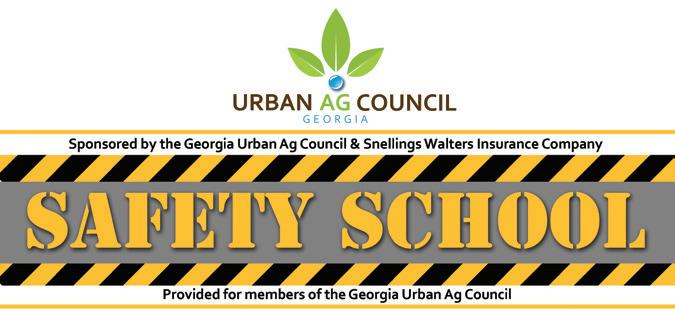
Visit UAC's Safety School to get training materials (training notes, slide presentation, attendance sheets) on a variety of safety topics.
UAC Safety School is available online to all businesslevel UAC members.
Here's how to access:
> Go to urbanagcouncil.com
> Use the "MEMBERSHIP" menu tab
> Click on "Members-only content"
> Log in as a member
> Use the email address and password that is associated with your UAC membership
> Need help? Contact us: Call 706.750.0350 or email office@georgiauac.com
> Scroll to the "Safety" category on that list and click on "Visit UAC Safety School"
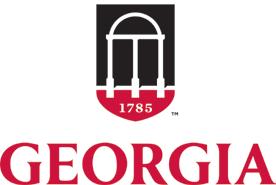
Hosted at the UGA Griffin campus, this field day offers the results of the latest turfgrass research and highlights the newest turfgrass releases. Exhibit booths and display advertising are available.
PLACE: UGA Griffin Campus 1134 Experiment Street Griffin GA 30223 Attendees and exhibitors
DATE: Wednesday, August 7
Making the most of the off season
by Erin Saunders, Leica Geosystems
For business owners, changing seasons present unique opportunities to recharge, reflect, and strategize for the busier times to come. The off-season is not merely a lull in activity—it’s a critical period to invest in your most valuable asset--your team and workplace culture.
Now is a great time to help support the wellbeing and engagement of your team. Busier times don’t always allow for personal checkins.
> Schedule one-on-one meetings with employees to gather feedback on their experience during the busy season and solicit improvement ideas from them. Get their feedback on things that went well, things that could be improved, and discuss what they learned.
4 4 4 4 4
You can also use that conversation to discuss professional development.
Development is an important part of keeping your team engaged.
> Are there skills or continuing education that team members have expressed interest in? Now can be a great time to explore development opportunities. There are many free or low-cost online courses through platforms like Linked In Learning and Coursera.
> This is also a great opportunity for mentoring or hands-on skill building. If there are handson skills they want to develop, consider pairing them with a mentor.
Recognition is an important part of reflection. Reflect on past successes and celebrate achievements with your team. Acknowledge individual contributions and collective milestones reached during the previous season.
> Recognition boosts morale and reinforces a sense of purpose and pride among employees. Use this positivity to fuel motivation for the challenges ahead.
> Recognition can come at the team and the individual level. You can write thank-you notes, have a quick conversation, and recognize people in team meetings.
> Peer-to-peer recognition is also a great way to keep people motivated. Consider having a bulletin board or white board with sticky notes and a pen nearby so employees can write a quick thank you or recognition note about a peer who goes above and beyond.
Consider promoting more work-life balance among your team members. Encourage employees to take time off and recharge during the off-season.
> This could be flexible work arrangements or a wellness activity that supports physical and mental well-being. A rested and rejuvenated team is more productive and resilient when the busy season arrives.
Now is a great time to set strategic goals and priorities for the upcoming busy season. Review the upcoming projects and anticipated workload.
> Proactively discuss where challenges might come up and how those might be solved.
> Remember to encourage healthy debate of ideas as the team brainstorms possible challenges and solutions. This makes challenges during the busy season less surprising and stressful for you and the team.
It’s likely that one of the future needs will be around seasonal staffing. Anticipate seasonal staffing requirements and begin recruitment efforts early during the off-season.
> Review job descriptions, refine hiring processes, and establish partnerships with local educational institutions or community organizations. By proactively addressing staffing needs, you’ll avoid last-minute scrambles and ensure a smooth transition into the busy season.
Busy seasons can be exhilarating and fun. It’s important to make the most of quieter times to help reconnect to your employees, focus on their engagement and wellbeing, help their development, and to proactively plan for the next active period so you and your team can thrive together.
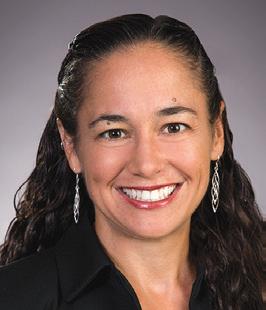
support | energize | enable | develop
SEED sponsorships offer our members an opportunity to promote their businesses and support UAC at a level beyond the membership dues.

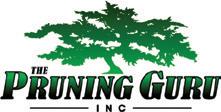



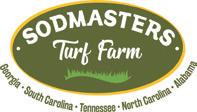
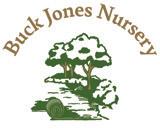





Erin Saunders is Regional Human Resources Business Partner with Leica Geosystems, part of Hexagon. About the author
P: 770.326.9517
E: erin.saunders@leica-geosystems.com














In the world of landscaping, one thing’s for sure: labor is the name of the game. Whether you’re mowing lawns, planting trees, or crafting intricate outdoor spaces, having a solid team of skilled workers is crucial. But here’s the kicker: finding and keeping those top-notch employees isn’t always a walk in the park.
Picture this: you’re a landscaping company owner. You know the grind—long hours, tough jobs, and high stakes. Your success relies on the folks who get their hands dirty day in and day out. From laying down sod to pruning bushes, your crew is the backbone of your business. But attracting and holding onto those skilled workers is no picnic.
In today’s dog-eat-dog job market where everyone’s got options, snagging and keeping top talent is key. To be the best, you have to set yourself apart. It’s not just about decent paychecks and normal benefits anymore. Nope, you have to show your crew you’re in it for the long haul—your workers’ well-being and their future financial security matters big time.
The 401(k) plan
You’ve heard of it—the 401(k) plan. It’s been hailed as a retirement savings champ in big corporations for ages. But it’s not just for the bigwigs anymore. Small businesses
like yours can harness its power, too. With some slick tweaks and nifty features, the 401(k) plan can be your secret weapon in the battle for talent.
Tailoring benefits to fit the crew
Flexibility is what sets the 401(k) plan apart. Unlike old-school pension plans that lock you into one way of saving, the 401(k) lets your crew call the shots. They can stash away cash based on their goals and risk tolerance.
So, you’re running a landscaping outfit. Seasons change, jobs come and go. With a 401(k) plan, your crew can adjust their savings during busy times to stash more cash and dial it back when things slow down. Plus, handy features like auto-enrollment and bumping up contributions can keep them on track, even when work ebbs and flows.
Sweet employer contributions
Sure, your team’s putting in the work, but you can sweeten the deal, too. Enter employer contributions, like matching bucks or profit-sharing perks. It’s your way of saying, “Hey, I’ve got your back.” And in the world of landscaping where good workers are gold, a solid employer contribution can make all the difference. It’s not just about boosting retirement savings—it’s about building loyalty and keeping your crew in it for the long haul.
And the 401(k) plan just got even better. With the latest tweaks in the tax code, small and mid-sized businesses like yours can unlock even more perks. We’re talking ROTH options on both employee and employer contributions. Translation? More ways to save big on taxes while beefing up those retirement accounts.
Employers can get tax credits for setting up new plans, or for converting existing plans to auto enrollment. There are massive tax advantages to employers to have retirement plans such as 401(k)s as well. You should consult your CPA about this.
Now, here’s a real game-changer: education. Giving your crews practical education on money matters can pay off big time. From retirement planning seminars to one-onone money talks, you’re arming your workers with the tools to make smart financial moves. And here’s a tip: lots of 401(k) plan providers offer financial know-how for free. It’s a win-win.
When your crew feels confident about their financial future, they’re more likely to stick around. They’ll be happier, more focused, and ready to tackle any job that comes their way. And that is good for business.
So, here’s the bottom line: in the wild world of landscaping business, having a solid team is everything. With the 401(k) plan in your arsenal, you’re not just offering a job—you’re offering a future. You’re showing your crew you’re invested in their success, today and tomorrow. And that, my friend, is how you build a business that stands the test of time.
Thelen Financial doesn’t offer any 401-K plans or planning. However as a full-service CPA firm, we believe in educating our clients and peers in the industry and we are more than happy to have a conversation about your unique situation and make a recommendation to a few providers that might be good fit.
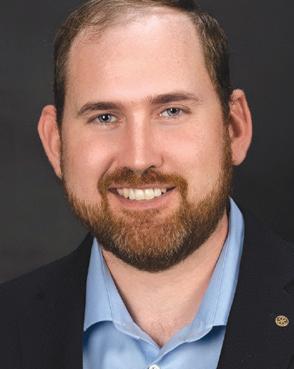
The former CFO of a landscape company, Thelen has spent the last decade either in a landscape company or other industry companies before moving into public practice.


With over 70 years of industry experience, we have seen the patterns time and time again. The market for insurance is cyclical.
Currently, both businesses and individuals are feeling the impact of a challenging market characterized by rising premiums and restricted coverage options— which in insurance-speak is called a hard market.
As insurers grapple with more frequent and costly claims, navigating these turbulent waters requires a deep understanding of the underlying factors driving the hard market phenomenon. Recently IIABA, the premier association for independent agents, shared talking points and key insights to help navigate this climate with a little more ease. Here are our favorite takeaways.
In essence, a hard market signifies a period of rate hikes and capacity restrictions making insurance coverage more expensive and harder to obtain. Insurers and reinsurers alike face heightened risks and respond by raising prices and limiting coverage options. Specific industries such as contractors in high-risk trades or properties in disaster-prone areas bear the brunt of these adjustments due to their elevated risk profiles.
There are a number of challenges contributing to the current hard market conditions. Exacerbated by global events, supply chain disruptions have led to increased costs and delays in repairing or replacing damaged property. Moreover, larger catastrophic weather events have intensified claims payments which has strained insurers’ financial resources. Compounding these issues is the phenomenon of “social inflation” where juries award unexpectedly high sums in lawsuits forcing insurers to settle claims they would traditionally take to trial.
For businesses and individuals seeking insurance coverage, the implications of a hard market are profound. Insurers faced with reduced capital and increased risk exposure are scaling back their underwriting appetite. This means certain classes of coverage may be harder to find, particularly in catastrophe-prone areas or niche markets such as excess liability.
And then there are premium increases that are affecting virtually everyone. Even individuals and businesses without a claims history aren’t immune to the broader market forces driving up insurance costs. The gap between projected policy pricing and actual claims payouts has widened, contributing to the current hard market conditions.
Understanding the dynamics of a hard market is essential for policyholders seeking to make informed decisions about their insurance coverage. Independent insurance agents play a pivotal role in guiding clients through these challenging times. With their expertise and industry knowledge, agents can help navigate the complexities of the current market and identify coverage options tailored to individual needs.
By taking a proactive approach to risk management, individuals and businesses can improve their insurability and potentially reduce premium costs. Here are some tips to consider:
Think twice before jumping ship. Switching insurance companies can affect your rates and may cause you to lose loyalty discounts. Review your policy with your agent for a clearer understanding of your coverage and how the switch could affect your coverage and your risk profile.
Lower premiums with a higher deductible or self-insurance. Self-funding puts the control back in your hands and allows you to customize based on your needs, which has saved our clients an average of 24% from their previous year.
Install new systems for more potential discounts: A central station fire and burglary alarm system, backup generator, temperature monitoring system, water leak detection system, residential sprinkler system, or lightning protection system.
While the duration of a hard market is difficult to predict, understanding its cyclical nature provides valuable insights for policyholders and insurers alike. As economic conditions evolve and market dynamics shift, insurance markets will eventually soften and usher in a period of increased competition and more favorable premium rates.
In the face of adversity, collaboration and resilience are key to navigating a hard market. By leveraging the expertise of our forward-thinking insurance professionals agencies, businesses and individuals can weather the challenges of the current hard market. Together we can navigate these turbulent waters and emerge stronger on the other side—simply contact us and we’ll get things started.




What keeps the owner awake at night?
If you are a manager, this is an important to question to ask your boss. It’s key to “managing up.”
If you are the boss, its important to let your team know what’s going on in your head.
It’s a metaphor: Even if you sleep well, you still have challenges that you would like solved.
We get to the bottom of this question during our consulting projects; solving the big challenges on the owner’s mind. We also use this question when helping seconds in command to work better with their owners. A good #2 needs to be able to read their boss’s mind.
So what keeps you awake? The answers to this question fall into five categories. Some are amusing, but they are all real.
My newborn. Family comes first, especially when it’s a new family. Though I have personally found that older children can take up just as much time. ;-)
Moral: Make sure your team or second in command can rise to the occasion, and run the business so you can take care of your personal business.
Politics. There is nothing you can do about the Presidential election. Sometimes the economy has a hiccup during an election year, but not always.
History shows that the economy and stock market does well (or not well) under both parties.
Our economy is driven by entrepreneurs and our capitalist spirit, the President controls less of it than you would think.
Moral: Don’t fret about things you can’t control. Pay close attention to your local market and your own company and ambitions.
3.
Employees and culture. Every leader wants to protect their culture, and sometimes they need to deal with difficult employees. These two are connected.
1. 2.
Too many companies hold on too long to the wrong employees. The owner thinks the employee is critical to operations. Suddenly the pain becomes too great, and the employee gets “promoted to another company.”
In hindsight, the owner will say, “our team rallied, and we didn’t skip a beat; we could have done this much earlier.”
Moral: The best route to protecting your culture is actively fixing the broken links.
4.
5. 4 4
Don’t wing it, plan for it.
Keeping momentum. Many of our clients had a great 2023, and the question that keeps them awake is, “How do we maintain the same level of hunger in our team in 2024?”
There is not a single or simple answer to this question. (But) it’s key to have a refreshed purpose or new set of goals to keep the team focused. It can’t be the “same old, same old.”
Also, your team will go through walls for you, but don’t let them break their nose while doing so.
Moral: Take care of your team while keeping them inspired by the current challenges and future goals.
Handling growth. The final item that keeps owners awake is preparing the organization to handle the growth.
Do you have the right team in place to get you to the next level, and to handle it once you arrive? Because “what got you here won’t get you there.”
It helps to periodically think ahead 3-5 years, and consider the systems, positions and capabilities you need. As in car racing, you have to plan 3-4 turns ahead (i.e. 3 steps ahead)
Moral: Your success tomorrow is based on moves you made yesterday.

Find out what keeps your team awake at night as well. It’s not just the owner who thinks about work when they go home. Any team member with an ownership mentality will carry that burden with them.
Find out what keeps your team awake at night, and help them solve the controllable issues and relieve the undo pressure.
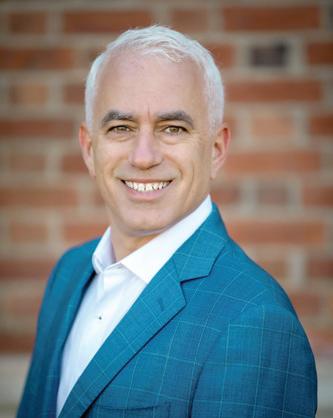
Jeffrey Scott, MBA, is the leading authority on growth and profit maximization in the landscape industry. He grew his landscape company into a successful $15 million multidiscipline enterprise, and he’s now devoted to helping others achieve profound success.
His clients on average see a 27% profit improvement in their first year alone.
He has consulted with over two hundred landscape companies and facilitates the largest global peer group of landscape business owners in the world.
Jeffrey is the founder of the Destination Company® culture program, which has been adopted by hundreds of landscape firms across the continent, allowing companies to attract and retain the best employees and build their competitive advantage.
He has worked with national brands such as Caterpillar, Case equipment, Spring Green, Greenius and LMN software. As a sought-after keynote speaker and author of three books, he is invited back year over year to present at the top industry events.
Jeffrey is the only business expert in the green industry who has consulted world-wide, in the US, Canada and Europe, and who has also been elected to the Million Dollar Consulting® Hall-of-Fame.
He has published hundreds of articles in all the major industry publications and over 10,000 people read his weekly newsletter, Growth Tips
Use this link to receive a $100 discount on your registration. Offer valid until the event starts in August.
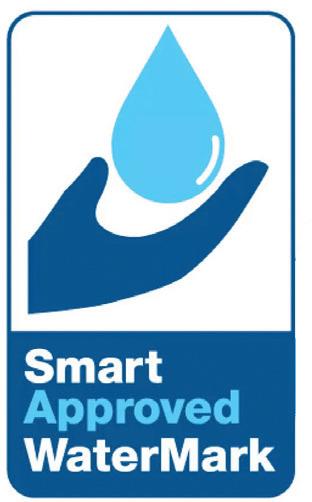
The Smart Approved WaterMark is new to the U.S., but has provided a trusted system of identifying water conservation products in Australia for 20 years. This distinction was recently expanded thanks to The Water Conservancy and the Alliance for Water Efficiency to grow this rigorous certification program.
The Smart Approved WaterMark is described as an “independent assessment certification process providing assurance for consumers, businesses and the water industry that the branded, certified products and services are water efficient, sustainable and fit for purpose.” Recognized for their effective promotion of water conservation products and programs since 2004, the Water Conservancy has been the key advisory hub for the adoption of improved water stewardship products in Australia. Likewise, the Alliance for Water Efficiency is dedicated to water conservation efforts across North America.
The Smart Approved WaterMark is a respected designation that helps consumers choose water efficiency. Work by the seven members of their Technical Expert Panel is utilized to evaluate applications from product manufacturers and service providers. The panel meets three times a year to independently assess those wanting to receive accreditation. There are 87 approved certifications across various categories, including turfgrass, irrigation, garden, pool and spa, car washing, plumbing, greywater, and bathrooms.
When it comes to turfgrass, TifTuf Bermudagrass is the first and only cultivar to pass the rigorous standards and receive the Smart Approved WaterMark designation.
TifTuf is listed on the product website as “incredibly drought tolerant and water efficient, proven by extensive independent turf trials. TifTuf is a grass that has been bred to stand up to drought conditions and save you water.”
The designation currently includes 36 other outdoor water use efficiency tools and technologies, such as sprinkler systems, irrigation controllers, timers and more. Product manufacturers that have received the Smart Approved WaterMark endorsement receive a license to use the logo and are listed on the website. Many of the products licensed in Australia have parent companies in North America, so this expansion is a great fit.
The U.S. EPA WaterSense program evaluates select water efficiency products, but it misses the mark when it comes to reviewing and promoting drought tolerant plant materials. By having the Smart Approved WaterMark initiative, consumers and local leaders can choose water conservation efforts in North America that further encourage increased efficiencies.
Saving water is universally recognized as good stewardship. Product advancement helped lead the way, but improved plant breeding by the University of Georgia, and perhaps others, is the new horizon. The Smart Approved WaterMark values the potential for these gains and seeks to make conservation innovation robust and data driven. The list of approved products in this program is available at www.smartwatermark.org.

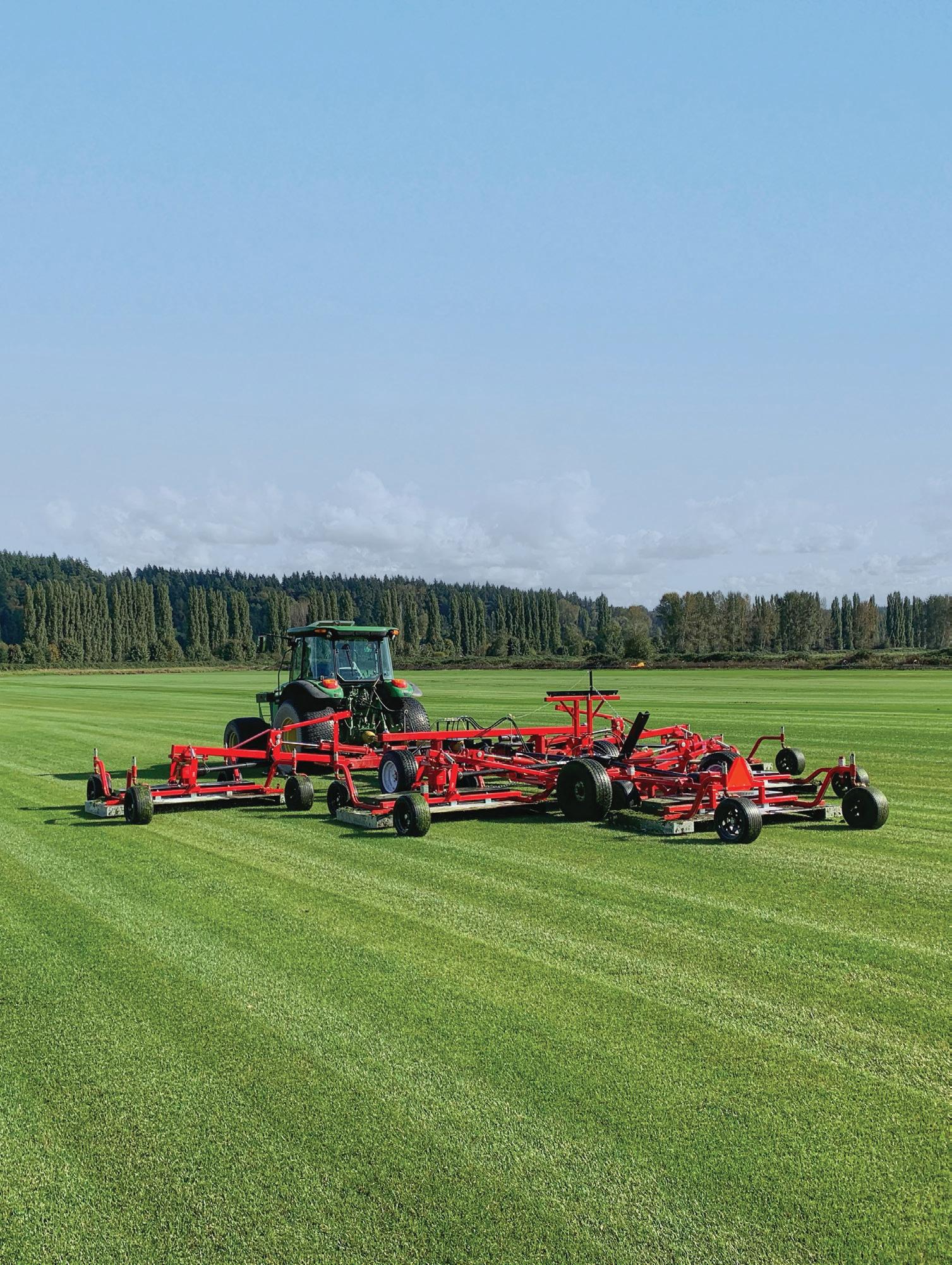

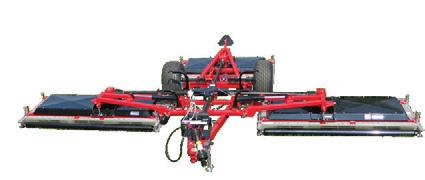

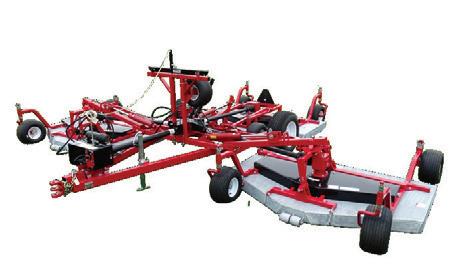
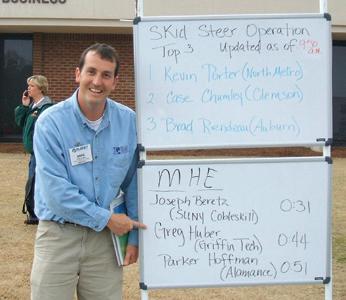
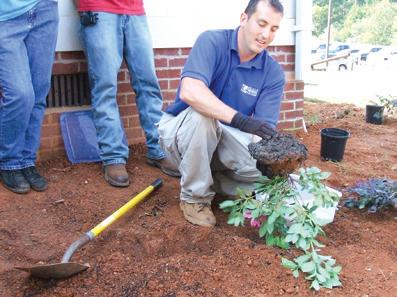

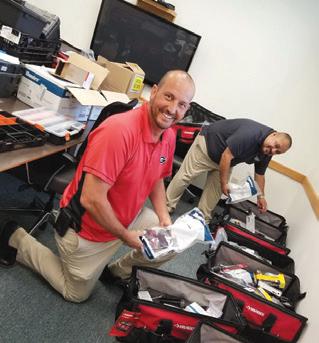

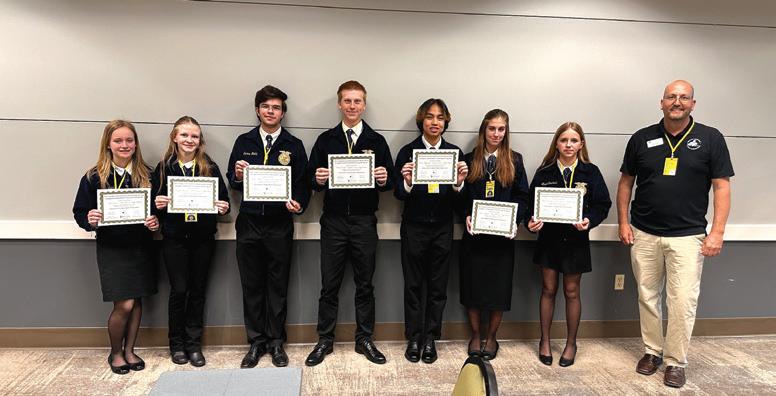
Please allow me to share an important announcement: On May 13, I transitioned to a new role as the Assistant Superintendent of Plant Operations and Engineering for the University of Georgia Griffin Campus. While it was a difficult decision, this is a tremendous opportunity to continue serving the University of Georgia in an exciting new capacity.
Serving the mission of Cooperative Extension through the Georgia Certified Landscape and Plant Professional Programs and the Georgia Center for Urban Agriculture has been one of the most enjoyable and rewarding experiences in my career. I’ve made some dear friends in urban agriculture and the green industry and I am deeply grateful for their support and generous service to these important training and certification programs.
While I will be serving in a different capacity, I will always be an ambassador for these programs and the outstanding people they represent. I’ll be working with Cooperative Extension and the Georgia Center for Urban Ag to help seamlessly transition these programs to the next program leader.
We do not anticipate any changes to the existing testing schedule. If you have any questions or require assistance, please contact Kimberly Allen at khayes@uga.edu 770233-6107.
Thank you for the outstanding work you do and the high standard of excellence that you represent.
Very best and Go Dawgs,
Greg Huber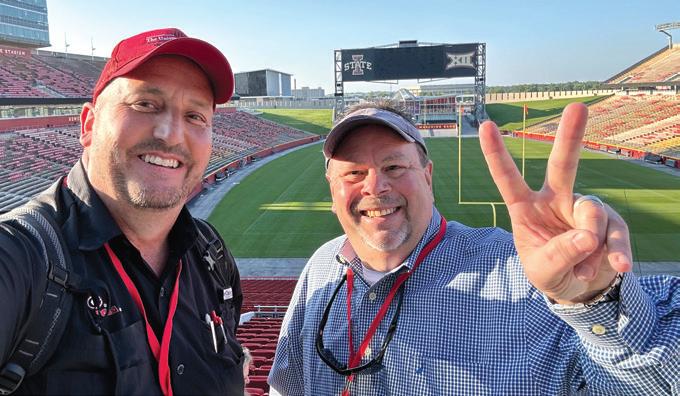
I’d like to extend a special thank you to the Georgia Certified Landscape Professional Task Force and the Georgia Certified Plant Professional industry advisors. These outstanding leaders have generously shared their time and wisdom to help shape and facilitate certification, education, and networking opportunities that bolster the success of the industry. Their valuable insight and guidance have been tremendous to these programs.

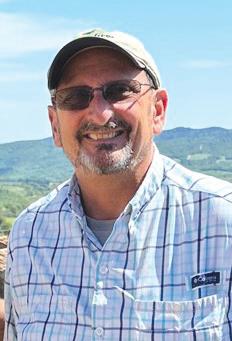
Rick Smith
The Pruning guru
GCLP Task Force
> Rick Smith (Chairman)
President, The Pruning Guru, LLC
> Mary Kay Woodworth
Executive Director, Georgia Urban Ag Council
> Lanie Riner
Executive Director, Georgia Green Industry Association
> Russell Camp
Grounds Foreman, Henry County Public Schools
> Craig McManus
President, McPlants, LLC
> Lyle Collins
President, Southern Trillium, LLC
> Bob Scott
Principal, Irrigation Consulting Services
> Gary Love
Horticulture Instructor, Lanier Technical College
> Dr. Clint Waltz
Extension Turfgrass Specialist, UGA
> Dr. Bodie Pennisi
Extension Landscape Specialist, UGA
GCPP Industry Advisors
> Wayne Juers
President, The Plant Doc
> Lanie Riner
Executive Director, Georgia Green Industry Association
> Melissa Riley
Central Region Agricultural Education, Georgia Board of Education
> Josh Allen
North Region Agricultural Education, Georgia Board of Education
> Annie Sanders
Training Manager, Pike Nurseries

Having now completed my 25th legislative session at the State Capitol, I am reminded that the only thing consistent in this annual social experiment is that the process to achieve policy changes is inconsistent. Familiarity at the Capitol is abundant. The staff and legislators are talented and proficient. The day-to-day procedure of moving a bill through the respective process is steady and workable. Yet the personalities, politics, and partnerships are everchanging…and you better be strong in all three to have success. That was certainly the story of 2024.
With the 12-week, long winding road of the 40-day legislative session behind us, “teamwork” was on full display as UAC’s coordination with business allies and others proved beneficial. There was no better partner than the Georgia Chamber of Commerce on key initiatives impacting legal reforms, both to help pass and stop legislation. The Independent Insurance Agents of Georgia also proved to be a strong ally. Partnerships are critical in the policy environment.
We are pleased to provide UAC members with this final list of key bills and topics we were engaged in and monitoring on your behalf.
Getting a handle on runaway verdicts and “one call, that’s all” ambulance chasers is important to UAC members and the business community. Progress was made on these tort reforms, but there is still more work to do.
4
SB 426 represents much needed tort reform for motor carriers as Georgia has been recognized as a “judicial hellhole” in part because we are one of four states that allows “direct action” lawsuits against insurers of motor carriers. Senator Blake Tillery led this reform effort as he brought the industry, insurers, and trial attorneys together to hash out an agreement to keep lawyers from going directly at the insurance carriers following a trucking accident. We wanted additional provisions, which may come at a later date. Time will tell how the insurance companies respond to such changes – we remain optimistic. UAC appreciates the interest of our members and other business partners on this issue.
4
HB 1114 was called the “Data Analysis for Tort Reform Act.” It establishes a process to collect data from certain insurers, insurance rating organizations, and state agencies to best assess targeted needs to tort reform legislation in the future. Governor Kemp sought this
language so this data could be used to help shape policy changes in the future, if warranted. There are insurers leaving the Georgia market and some have stopped writing new business in the state due to the civil liability environment. Data analysis and findings could be used to help reduce frivolous and excessive tort litigation.
4 4 4 4
A third tort issue we were seeking would have provided reforms to help address property liability relating to third-party crimes. This was a brutal battle that will continue in 2025. Trial attorneys had a death grip on this bill as bartering by the business community was largely ignored in these discussions. Even repeated requests made by insurance companies and private businesses were never incorporated in the bill to make it palatable. We know property insurance rates for businesses have been increasing and/or coverages have been reduced upon renewal. In the end, this legislation was so onesided for the trial attorneys we had to oppose the bill and thankfully it did not pass. Lines have been drawn and we expect the slugfest between the business community wanting common-sense lawsuit relief and the trial lawyers wanting to fortify state law that would benefit their “we get you cash” cohorts will rage on next year.
With the support of Governor Kemp and the legislature, we have seen billions in state tax surpluses returned to taxpayers in the past few years. We are pleased to see that trend continue through tax reductions that will benefit us all.
HB 1015 was led by Governor Kemp’s Floor Leader, Rep. Lauren McDonald, that accelerated income tax relief with a 0.10 percent cut, dropping us from 5.49% down to 5.39% for 2024. The long-term goal is to keep ratcheting down the rate to get it below 5% in the next few years.
In addition, HB 1021 will increase the exemption for dependents when filing your Georgia income taxes. Each taxpayer would be allowed $4,000 for each dependent, which is a $1,000 increase. This was an initiative that had the full backing of House Speaker Jon Burns as Rep. Lauren Daniel led this effort.
For those with a Georgia Agricultural Tax Exemption (GATE) card, SB 340 clarifies the sales tax exemption on purchases of Diesel Exhaust Fluid (DEF) used for agricultural production. Rep. Joe Campbell introduced this initiative as some retailers were unsure if the exemption was allowed on DEF used for farm equipment is included in the GATE tax exemption program.
It has been said that “whiskey is for drinkin’ and water is for fightin’.” Those words ring true for water issues here in Georgia. While the issue of property rights regarding waterways is not an issue for all, it is one that is worth monitoring. Last year, a world of confusion was created when a bill was passed to address access to navigable streams for hunting and fishing. It also referenced waterways as part of the “public trust doctrine,” which had many curious and concerned about what legal impacts would be in store for those with water withdrawal permits for irrigation, among other such state issued permits.


James
led
effort to clarify the use of waterways for hunting and fishing access. HB 1172 strikes the right balance and protects property rights.

Representative Matthew Gambill has always been a leader on workforce development. He carried HB 982 to restructure the process for building a high-demand career list.

4
In response, HB 1172 passed this year to clarify that when it comes to waterways, only “navigable streams” can be used by the public for hunting or fishing as the reference to the public trust doctrine was deleted. Trespassing on the privately owned beds of non-navigable streams is not allowed. Getting this bill signed into law will certainly help resolve most of the concerns expressed about waterways and private property protections. We appreciate Representative James Burchett for working with landowners across the state and leading the charge on this legislation. Special thanks also go to Senator Sam Watson for his vocal support on this issue in the Senate.
4
While HB 1172 is focused on “navigable streams,” questions remain around better determining a list and map of such streams. To help focus on this initiative, HR 1554 by Rep. Lynn Smith created a House Study Committee to evaluate navigable streams and potentially recommend legislative action in the future. This will be an important set of discussions and a big topic of conversation as legislation is contemplated in the 2025 session.
UAC is always watching the state budget process, helping encourage funding for programs and positions our industry sees as vital for the industry and growth in education and workforce development. Governor Kemp and lawmakers agreed to spend billions in funding of state priorities that dovetail well with our interests. We commend Senate Appropriations Chairman Blake Tillery and House Appropriations Chairman Matt Hatchett for their leadership on these huge spending plans. Here are some brief highlights:
> $4,470,500 for renovations to the Department of Agriculture headquarters building.
> $1,014,674 for lab equipment and renovations for the Department of Ag Tifton Lab.
> $900,000 in one-time funds for agricultural improvements.
Georgia Environmental Protection Division
> $350,617 for five additional positions to assist with agricultural water withdrawal permitting activities.
Education (University System and the Technical College System)
> $8,500,000 for design and construction of the UGA Science and Ag Hill Modernization project upgrades.
> $2,900,000 Renovation of Chambliss Hall, Abraham Baldwin Agricultural College.
> $7,421,541 to provide increased credit hour earnings for aviation, commercial truck driving, and nursing program areas.
> $10,320,142 for vocational and agriculture education equipment, statewide.
> $4,754,337 Increase funds to meet existing training obligations.
> $5,475,000 Technical College System of Georgia: System-wide equipment refresh, statewide.
> Over $76.7 million in funding for 12 additional campus expansions and equipment to address education and workforce growth.
We are very pleased to see the robust funding to a variety of education and workforce development programs across the state. State lawmakers are continuing to invest in our future education institutions and workforce programs. There is a lot to like about these targeted dollars for a growing Georgia.
We were pleased to support HB 982 which is good for workforce development as it streamlines and clarifies the process to add and adjust the state list of high-demand careers. This was another priority for Governor Kemp. It was led by Rep. Matthew Gambill and Senator Bo Hatchett. It will create a State Workforce Development Board to develop, approve, and annually publish a Highdemand Career List. UAC sees many advantages in this initiative to identify careers critical to the state’s current and future workforce needs.
HR 473 by Rep. Victor Anderson sets up the process to provide for a series of meetings to examine insurance and licensure standards in Georgia’s tree care industry. This House study committee can begin this summer to start collecting feedback and examining the needs of the industry and government systems to propose needed changes. UAC is proud to have several tree care professionals as members and leaders in our industry.
This article started with reference to the importance of relationships. We want to take note of many legislator 4 4
friends who will not return in 2025. This is not an exhaustive list, but it is an important one.
> Rep. James Beverly served as the House Minority Leader and was a friend to our issues.
> Rep. Penny Houston is a stalwart for rural Georgia and a leader on state appropriations.
> Rep. David Knight is a master of tax policy and was always a key voice for UGA Griffin programs.
> Rep. Jodi Lott always supported small businesses and ag policy.
> Rep. Clay Pirkle is a special friend who always brought southern wisdom and a kind word to every debate.
> Rep. Richard Smith was universally known as a very good man - his death halfway through the legislative session rocked the Capitol.
Relationships are important and these folks were among the very best. Their service to Georgia mattered and we are thankful.
We are also thankful to you, our UAC members and industry leaders. Your engagement is meaningful and your support for these policy efforts is essential. It is an honor to work with such professionals. I am grateful.
There is much our members have done individually to support elected leaders and we want to build on this success while continuing to grow our outreach among elected leaders...together we grow. In this effort and with the leadership of our Board of Directors, UAC formed a Political Action Committee (PAC) called Georgia GrowPAC.
This PAC will have several functions, including:
> Supporting the campaigns of political candidates friendly to our initiatives;
> Educating elected officials and key decision makers on issues important to the landscape, turfgrass, nursery, and other sectors of the urban agriculture/ green industry;
> Advocating to advance our industry and commonalities;
Contributions from Georgia GrowPAC will be restricted to non-federal candidates in their races for legislative and statewide offices.
As you know, government action can make the difference between the success of your business and the
sustainability of our industry. Also, with each legislative session, the groups that we must battle for law changes have proven to be good at generating PAC contributions – we must compete in this arena.
The Georgia Urban Agriculture Council has grown and adapted over our 40 years of service to this industry. Advocating for our diverse green industry business interests in the legislative and regulatory arenas is critical to our future success. Georgia GrowPAC will be an effective tool for our industry to show strong support for candidates, especially in election years.
Georgia GrowPAC needs your contribution. We must act now, or we run the risk of being left behind.
Your corporate or personal commitment will help us prepare today- all donations are welcome. We have established five levels to reflect annual membership giving: 5-Star: $2000+, 4-Star: $1000, 3-Star: $500, 2-Star: $250, 1-Star: $100. Please look for additional information on our website at urbanagcouncil.com.

UAC works closely with Tolar Capitol Partners, monitoring and reporting weekly during each legislative session through Capitol Connection updates. These e-newsletters also include short surveys to "take the pulse" of our UAC members on important issues. If you work for a UAC member company and would like to be added to this email list, please contact us at office@georgiauac.com or 706-750-0350.
Increased lawsuits are often blamed for running up the cost of businesses to obtain premise liability and motor carrier insurance. How have your insurance coverages been impacted over the past year?
The Presidential Preference Primary is Tuesday, March 12. What are your plans to vote? I
Based on our list of legislation impacting our industry, tell us what grade you would give the 2024 Georgia General Assembly for their work this year. I

On April 29, 2024 Governor Brian Kemp met with safe digging stakeholders to issue a proclamation announcing April 2024 as Safe Digging Month in Georgia. As April marks the start of spring digging season, Georgia 811 and Governor Kemp are encouraging homeowners to contact 811 before they dig. Representatives from utility facilities, local governments, safety administrations, and industry associations gathered together in recognition of the importance of contacting 811 before excavation to prevent utility damage, human injury, and service interruptions.
When calling 811, homeowners are connected to Georgia 811, which notifies the appropriate utility companies of the intent to dig. Professional locators are then sent to the requested digging site to mark the approximate locations of underground lines with paint and flags. Once lines have been accurately marked, digging can begin around marked lines.
“We applaud Governor Kemp for his continued efforts in promoting safe digging over the years,” said Meghan Rafinski, Georgia 811 President and CEO. “With the statewide proclamation, we aim to bring awareness to both homeowners and professionals about advanced excavation notification and safe digging practices. By having underground lines marked, those digging are making an important decision that can help keep them and their communities safe and connected.”
Georgia 811 provides educational and awareness resources throughout the year. Homeowners and professionals can access free online courses, request training, and learn to submit dig tickets online by visiting www.Georgia811.com.
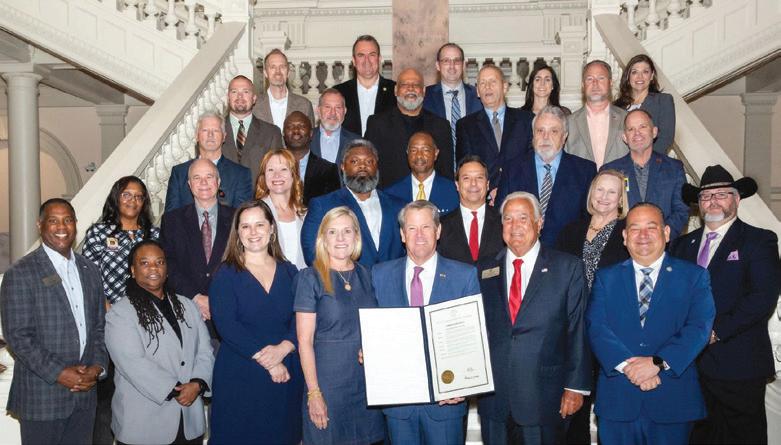
Amy Averill (Comcast), Julia Ayers (Comcast), Tiffany Baker (PHMSA), Rick Bell (Georgia 811), James Childs (Walton EMC, GUCC Board), Will Culbreath (PSC), Ange Djahon (PHMSA), Jefferson Dominguez (Jefferson Wallcovering & Construction Inc., GHCA Board), Megan Estes (Georgia 811), Ted Foster (Cobb County), David Hafner (Colonial Pipeline), Rob Holbrook (Cobb County, Georgia 811 Board), Commissioner Fitz Johnson, Gov. Brian Kemp, First Lady of Georgia Marty Kemp, D’Shante Lucas (PHMSA), Commissioner Lauren “Bubba” McDonald, Terry McLaurin (Georgia 811), Rob McKinney (ACG Georgia), Shannon Palmiter (Georgia 811), Mark Reida (Cobb County), Roy Rogers (Blount Construction, GUCC Board), Robert Singletary (GPERI), Rick Slagle (Southern Company Gas, Georgia 811 Board), Vicki Temple (Civil Site Services), Pat Wingo (Georgia 811), Mark Woodall (AGC Georgia)
Visit www.Georgia811.com for more information about Safe Digging Month and the call-before-you-dig process.


Healthy, natural turfgrass is more than just a pleasing addition to a home’s curb appeal. Natural turfgrass is among the most resilient plant materials and provides many benefits that can improve quality of life and the environment. There are countless turfgrass species and cultivars that are adapted to different climates and uses, and researchers from universities and companies like ScottsMiracle-Gro are driving innovation in this area as the environment and consumer needs continue to shift.
“Natural turfgrass is often misunderstood. Misconceptions and misinformation have given it a bad reputation in some circles. But the truth is that natural turfgrass has the potential to foster a healthier environment and provides a multitude of benefits to the individual, local communities, and the planet.”
~ Dr. Kelly KoppExtension Water Conservation and Turfgrass Specialist Utah State University
According to Dr. Kopp, natural turfgrass can be a powerful tool for promoting sustainability. As a groundcover, it prevents soil erosion, slows the flow of stormwater, filters nutrients out of stormwater, and improves soil structure. Like all living plants, it also absorbs carbon dioxide and releases oxygen, trapping carbon underground and reducing atmospheric concentrations. It is also proven to lower atmospheric temperatures, which are increasing in certain areas known as urban heat islands.
Ecosystems also benefit from natural turfgrass. It provides a habitat for wildlife, from bees to birds to bugs, while also supporting the growth of native species of plants.
Growing natural turfgrass helps create a more resilient environment, too. During a storm, the roots stabilize soil, slowing water runoff and preventing erosion. They also act as natural water filters, keeping contaminants from entering local water systems.
Dr. Matthew Koch, Director of Biotechnology, Genetics, and Grass Seed at The Scotts Miracle-Gro Company, explains that diverse varieties of natural turfgrass species are even more beneficial for rainwater absorption than one species alone. Dr. Koch explains, “Different natural turfgrass species have different root structures. Some are deeper and more extensive, while others are shallower. The diversity of roots helps to improve soil structure which reduces erosion and enhances water absorption.”
Along with the many ecological and environmental benefits, natural turfgrass is also beneficial for mental health and well-being. According to Scotts’ The Benefits of Lawn report, natural grasses and other ornamental plants can reduce noise levels by 20-30%,[1] creating a tranquil environment, which is especially helpful in loud, urban areas, and allows for outdoor play and recreation. Studies have also shown that spending time in natural environments can reduce cortisol levels, which are associated with stress.
Natural turfgrass has an important role to play in cities, says Dr. Kopp, especially in large urban areas prone to storms.
Many urban areas face challenges when excessive rainfall overwhelms inadequate stormwater management systems. During a heavy storm, rain cannot infiltrate the concrete and asphalt that dominate traditional urban areas, and this causes flooding. Instead of building more impervious surfaces, Dr. Kopp says cities should use the water retention and infiltration properties that natural turfgrass provides by increasing its use in green spaces and cultivating “sponge cities.”
The idea behind sponge cities is fairly simple: increase green spaces using natural turfgrass and other plants, replacing impervious concrete and asphalt where possible, to reduce flooding.
By increasing green spaces in cities and large urban areas with trees, plants, natural turfgrass and other green infrastructure, the landscape is better equipped to absorb rainfall and filter water efficiently. Similarly to the way grass prevents soil erosion during storms on your lawn, natural turfgrass and other green elements can reduce the burden on stormwater runoff systems and mitigate flooding. In fact, lawns can balance out 100% of runoff from roofs, drives, and streets that are connected to storm sewers and convey stormwater directly to streams or lakes (see Footnote 1)
Flooding isn’t the only challenge cities face that natural turfgrass can help solve. Because concrete and asphalt materials can’t absorb and release water efficiently, they can’t cool the environment. In fact, these impermeable materials retain a great amount of heat. Combined with high population densities, cities with large impervious areas can easily turn into heat islands.
Urban heat islands occur when cities experience warmer temperatures than nearby rural areas, which tend to be less developed and have more green space. In turn, those green spaces hold less heat and have grasses, trees, shrubs, and other natural features that keep the area cooler than nearby cities.
According to Climate Central’s Hot Zones: Urban Heat Islands report, trees and vegetation, alone or in combination with shading, can help reduce peak summer temperatures by 2-9°F (1-5°C) in an urban area.[2]
Adding natural turfgrass can help reduce city temperature, preventing the urban heat island effect. Dr. Kopp explains that when natural turfgrass absorbs water through its roots, it moves through the plant becoming water vapor that is then released into the air through
grass leaves, naturally cooling the environment. Whether in parks, greenways, or lawns, more natural turfgrass in urban landscapes can keep the environment cooler and reduce heat-related risks.
[1] The Scotts Company. (2002, July). The Benefits of Lawns: A Balanced Look at Published Information.
[2] Climate Central. (2021, July 14). Hot Zones: Urban Heat Islands.
Transforming landscapes for the better From promoting sustainability and biodiversity to mitigating flooding and combating urban heat islands, natural turfgrass has much to offer.
Scotts, a leader in lawn care for more than a century and a half, leverages scientific research and qualified experts to educate and inform the public about the benefits of natural turfgrass while continuously innovating its products to adapt to the changing environment and homeowners’ needs.
To learn more about the power of natural turfgrass and how you can transform your landscape for the better, visit Scotts. com.

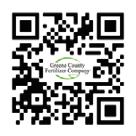
What exactly is a sustainable landscape?
“Sustainability” has so many descriptions and connotations, it’s challenging to define. One that works for me comes from Colorado State University’s Extension Service (from the agency that coined the term “xeriscape”):
“Sustainable landscaping includes creating an attractive environment that is in balance with the local climate and requires minimal resource inputs, such as fertilizer, pesticides, gasoline, time, and water. Sustainable landscaping begins with an appropriate design that includes functional, cost efficient, visually pleasing, environmentally-friendly and maintainable areas.
It pays close attention to preserving limited resources, reducing waste, and preventing air, water and soil pollution. Compost, fertilization, integrated pest management, using the right plant in the right place, appropriate use of turf and water-wise gardening are all components.”
Lots going on here, so let’s hone in on the first adjective: attractive. Needless to say, that’s what our Green Industry is all about!
Key point: Our industry sells beauty! We sell products and services people want but don’t have to have in their lives. Spending discretionary dollars on a landscape is an emotional decision and recognizing “attractiveness” is emotional. Consequently, a sustainable design needs to be drop-dead gorgeous for folks to appreciate it and most of all, to pay for it.
Here’s the conundrum: Environmental purists will argue that “drop-dead gorgeous” isn’t important to pollinators, wildlife or native plants. That won’t fly with most of our traditional customers or their HOAs. People create
the landscape, people spend their time and resources taking care of the landscape and people expect to receive pleasure from it.
An expert on this subject is University of Virginia’s Dr. Elizabeth Meyer. She wrote a manifesto entitled, Sustaining beauty. The performance of appearance. It is an influential article on the importance of beauty when crafting a sustainable design.
“A beautiful landscape works on our psyche, affording a chance to ponder a world outside ourselves. Through this experience, we are decentered, restored, renewed and reconnected to the biophysical world. The haptic, somatic experience of beauty can inculcate environmental values.”
Humans are drawn to beautiful things. Whether it is an exquisite painting, a gorgeous model or a stunning landscape, attractiveness effects how we emotionally and logically respond to it. Unfortunately, what is generally considered attractive is a manicured, lawn-centered property with severely pruned plants velcroed around the house like parsley around the turkey! It has appeal because it is very well-kept and controlled. It is the default acceptable approach for most neighborhoods and homeowner associations. Unfortunately, it has few sustainable qualities but it is still the standard for most of our customers.
How do we combine the two approaches? Sustainable elements and principles must seamlessly partner wth this traditional model. A great word to describe this is an amalgamation. That’s because it means the forming of a close union without complete loss of individual identities. The landscape is sustainable…and stunning!
Too often sustainable elements are just added into existing designs without much thought to how they work together. Procuring a bunch of native plants and randomly placing them among the exotics might make the property a bit more “sustainable” but it won’t make it beautiful.
Just adding more stuff does not make it more attractive. This approach moves toward a “plant zoo”; a mishmash of attractive favorites planted wherever there’s open space.
With this approach, the individual elements might be nice but the overall effect is chaos. I believe this quote from Nan Fairbrother, author of The Nature of Landscape Design (one of the most important books on landscape design ever written) sums it up:
“A collection of choice plants is not a beautiful landscape any more than a list of choice words is a poem. The merit is in the design, not the material it is expressed in, and the best designs, like the best poems, make ordinary material significant by its arrangement.”
So, whether or not the materials are sustainable, it’s not about the individual parts, rather how they work together. Beauty’s impact on us is the result of how the elements are put together and the emotions evoked.
Landscape architect and professor William Nelson writes the following in his book, Planting Design, a manual of theory and practice:
“Theorists, philosophers, critics, and other artists have been ensnared for centuries in their efforts to find the critical terms to define and judge the effects of beauty on people. In truth, beauty cannot be measured in quality or quantity, yet it is a recognizable element.”
People have come to use the term as if it had physical substance. For this reason, beauty is often considered something you can add to that which is considered ugly. Incorrect! Rather, it has to do with the relationship between the observer and the object being viewed. In that process, it causes a personal reaction. Two viewers observing the same scene will react differently because of variables between the individuals such as experience, education, purpose, and social environment.
Therefore, it would seem that the adage “beauty is in the eye of the beholder” implies that no two people will agree that something is beautiful. Not necessarily true and there’s quite a bit of research to indicate a significant agreement among people on the attractiveness of objects, scenes and even other people! And…that it can be measured, analyzed and broken down into its basic parts.
This positive or negative emotional response is generated by the basic elements of design: form, texture and color. Every landscape element and composition is made up of these basics.

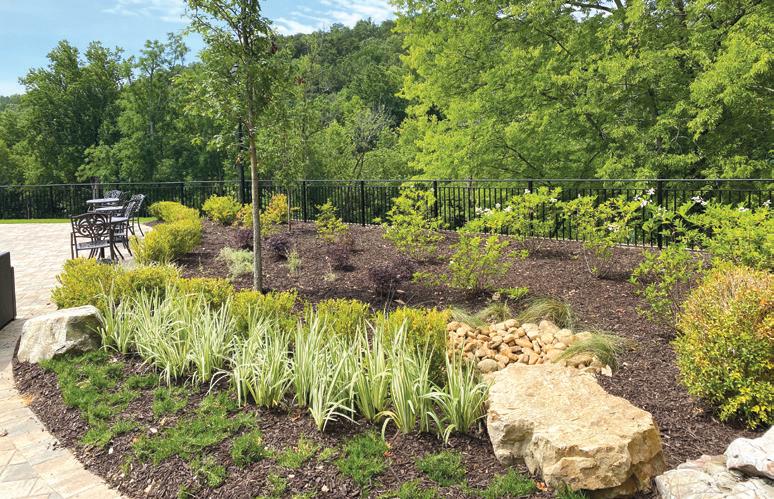
These are the raw ingredients of beauty and they can be manipulated during the design process. It’s imperative to become familiar with and use each as a critical component of beautiful design!
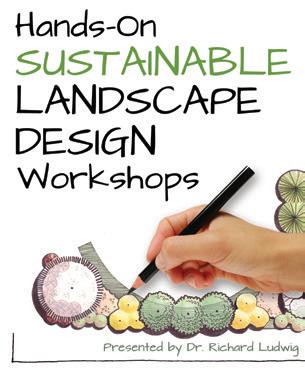
Join us
If you’re looking to offer sustainable products and services, make sure they “amalgamate” with the existing design. The upcoming sustainable design workshops will center on this concept. Join us to create sustainable approaches that are stunning!
August 15 | October 8 | December 12
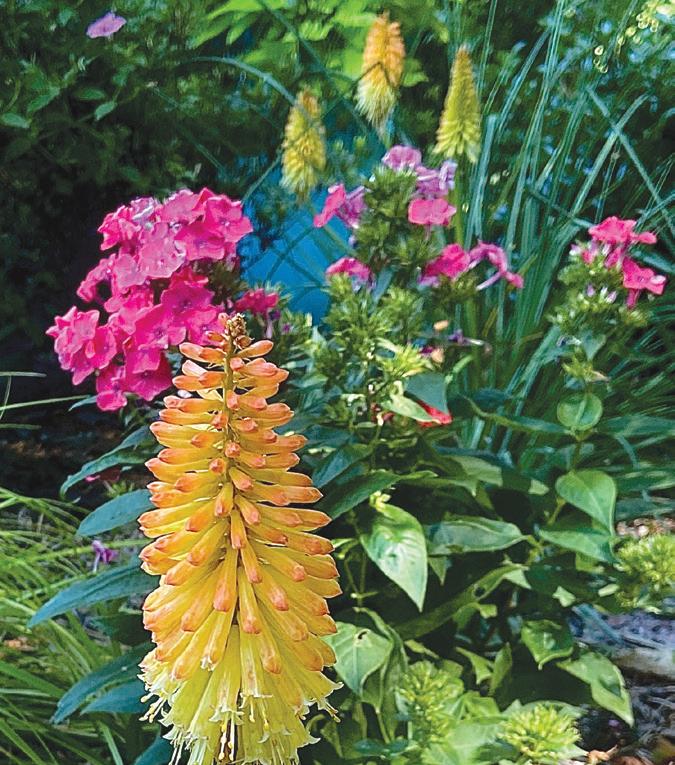
There are 34 recipes available at www.ezcapes.com showing you how to partner perennials like Pyromania Blaze red hot poker, ornamental grasses and the new Luminary Sunset Coral tall garden phlox.

You will also find recipes for the new Meant to Bee Queen Nectarine and Meant to Bee Royal Raspberry agastaches and inspiration to try perennials that have been around but are new to you.
It is Night and Day at The Garden Guy’s house when it comes to perennials. That is a little tongue and cheek but also the perfect recipe for which I had been looking, and it’s all thanks to Garrison Farm and Garden in Cornelia GA. It’s amazing that a small town in north Georgia, 40 plus miles north of Athens is causing many of my Facebook fans to be green with envy.
Garrison Farm and Garden is a Proven Winners Certified Garden Center. As such, they elected to showcase the EZ ScapesTM for Pollinators, which are recipes developed by Walter Gardens, the perennial partner of Proven Winners. Since I am a pollinator nut this caught my eye.
I have been writing a garden column for almost 30 years and I have never really written about a website. The EZ ScapesTM program needs to be shouted from the rooftop and hence this column, too. The site I am referring you to is www.ezscapes.com.
Here you will find 34 recipes for combining perennials. These are recipes that have multiple seasons of interest, successive blooming, complementing foliage and similar growing conditions. The information provided with each recipe gives you beautiful pictures of each plant plus keys to successful growing.
This year a new perennial astilbe is hitting the market. It is called Dark Side of the Moon. It has almost chocolate purple foliage and glorious purple plumes. In 42 years of being a professional horticulturist in the south I have seen only two patches of blooming astilbe. They just have not been a southern plant though the word in garden circles is Dark Side of the Moon is changing that.
So, how do I achieve success with this new plant, I wondered. The Facebook post from Garrison Farm and Garden introducing me to EZ ScapesTM was perfect timing as I discovered the Night and Day recipe.
So, here is how it worked with me and this points out the versatility of EZ ScapesTM. The recipe suggests Dark Side of the Moon Astilbe, Dolce heuchera and Shadowland hosta. You’ll see they further suggest Dolce Wildberry heuchera and Shadowland Coast to Coast hosta. At your garden center you can tweak the recipe you like based on availability or preference.

This artist rendering shows a painted inspiration for the EZ ScapesTM recipe called Night and Day featuring the new Dark Side of the Moon astilbe making its debut this year.
Inspired by the EZ ScapesTM recipe, I planted Dark Side of the Moon astilbe, with Dolce Appletini heuchera which will dazzle next to the purple foliage of the astilbe, along with Shadowland Empress Wu (the Proven Winners Hosta of the Year) with blue leaves and Shadowland Autumn Frost hosta with creamy yellow and green leaves.
So as the artist rendering starts the thought process going, know that you can steal a plant from one recipe and incorporate it into your plan as needed. This website will make perennial gardening a breeze but also stir up the artistic designer in you.
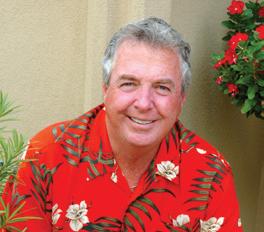
About the author Norman Winter is an author and speaker on horticultural topics. Follow him on Facebook for more photos and garden inspiration: Norman Winter The Garden Guy
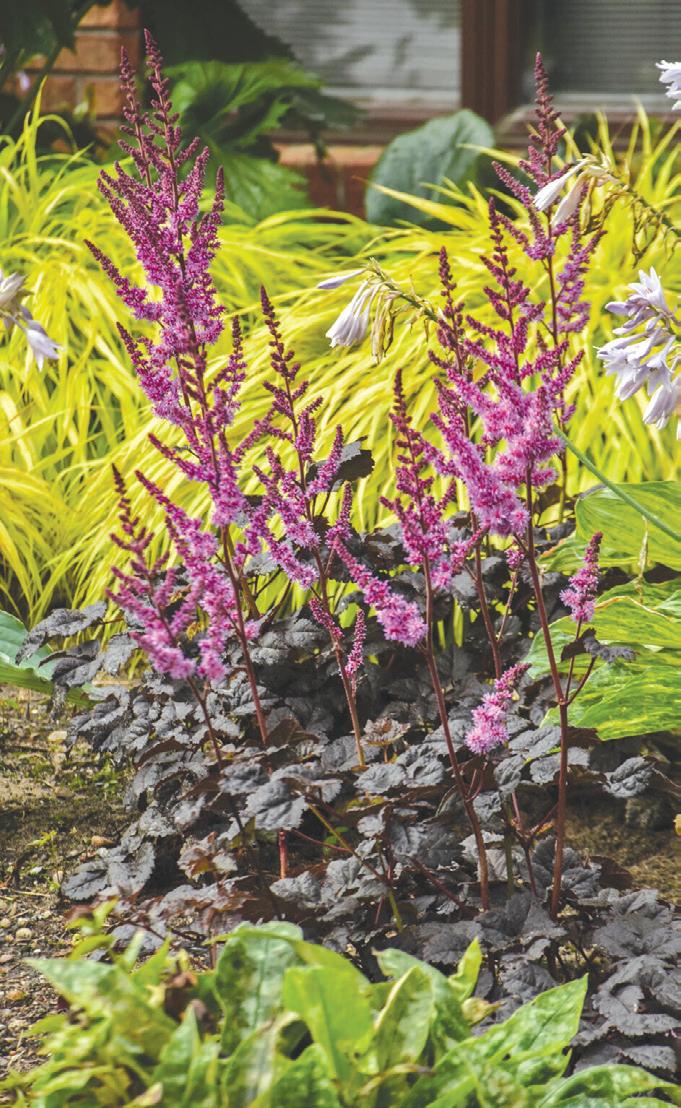
Dark Side of the Moon astilbe is a new perennial making its debut at fine garden centers across the country.
As you look at the recipes you will see the newest Luminary tall garden phlox, this year’s hot new Meant to Bee agastache and Color Coded coneflowers. It just might eliminate your hesitancy to try perennials. The easiest 5% you'll ever save. Sign up for auto-renew now!
UAC business-level members can select the auto-recurring payment option for their annual membership investment and get an immediate 5% discount.
The auto-recurring payment option is available for credit card payments only. Your credit card automatically will be charged on your annual renewal date.
It's easy: First, go to urbanagcouncil.com > Choose the Membership menu, then Member Login. NOTE: Only the primary contact for your company will be able to manage/renew the company's membership. Contact us via phone or email if you need help with logging in.
Even easier: Contact us and we'll do it for you! Call 706.750.0350 or email office@georgiauac.com
Plants have both common and scientific names.
> Common names vary widely from region to region.
> Scientific names contain the genus name and species names (describes the species characteristic) and often do not change.
For instance, southern magnolia is the common name but the tree also can be called “evergreen magnolia,” “big laurel,” “bully-bay,” etc. However, it only has one scientific name: Magnolia grandiflora. Magnolia is the genus name, while grandiflora is the species name, meaning large flower.
Plants can be divided into different categories:
> Annuals finish their life cycle within one year, typically are planted in the spring, bloom in the summer and die in the summer.
> Perennials come back every year and live many years.
> Herbaceous plants contain soft, flexible, and often green stems that die back to the ground every year.
> Woody plants have woody stems that come back or stay above the ground every year.

> Evergreen conifers have needle-like foliage.
> Broadleaf evergreens retain their foliage the entire year.
> Deciduous plants shed leaves in the fall and winter.
To be a successful landscape professional, choosing the right plant for the right place to fulfill the landscape goal is key. Thus, understanding the plant (growth habit, environment requirement, color, texture, life cycle, etc.) and coordinating the location plays an essential role in a successful landscape.
The USDA plant hardness zones map is commonly used by horticulture professionals to decide where a plant can grow, survive, and thrive.
Figure 1 (released in 2023) showed the following Georgia plant hardiness zones:
> 7a-b (north GA, north part of Appalachian Plateau, Valley and Ridge, and Blue Ridge)
> 8a-b (South part of Appalachian Plateau, Valley and Ridge, and Blue Ridge and Piedmont region)
> 8b (Piedmont and part of Coastal Plain)
> 9 (south part of Coastal Plain)
Normally these consist of annuals or perennials grown as annuals. They require full sun and well-drained soil to thrive and commonly offer different bright colors, used in the landscape for spring and fall color.
> Pansy (Viola × wittrockiana): Native to Europe, cold season annals, zone 6-10 (Figure 2).
> Geranium (Pelargonium x hortorum): Perennial, native to Southern Africa, zone 4-8 (Figure 3).
> Begonia (Begonia spp.): Perennial, native to Southern Africa, zone 2-10 (Figure 4).
> Flowering Quince (Chaenomeles speciosa): Perennial deciduous woody plants, native to China, zone 5-9 (Figure 5), blooms in late spring to early summer with white, red, pink to orange color with singlepetal and multi-petal types. Peduncles (flower

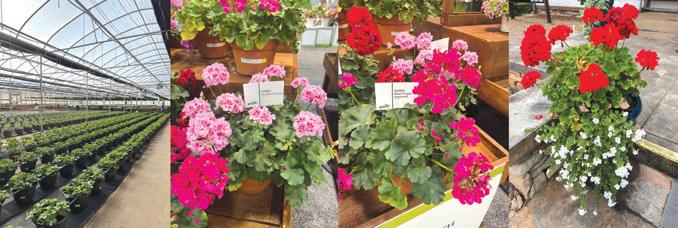


stems) are often absent, and flowers are directly attached to the stem. Stem contains spines, prickles or thorns. It grows well under full sun to partial sun and is tolerant of most kinds of soil including clay. It is also drought tolerant. Quince prefers to grow in somewhat acidic well-drained soil. Single-petal red varieties: “Texas Scarlet,” “Spitfire;” multi-petal varieties: “Cameo” (apricot-pink color), “Scarlet Storm” (red color); “Double take orange/peach/pink/ scarlet/eternal white).”
> Butterfly Magnolia (Magnolia x acuminate x denudata): Deciduous hybrid between M. acuminata ‘Fertile Myrtle’ and M. denudata ‘Sawada’s Cream,’ zone 5-9 (Figure 6). It grows well in full sun and well-drained soil, once established. Its bright, large yellow flowers bloom before leaves come out and are very showy during springtime. This is a plant that should be used more in the Georgia landscape.
> Camelia (Camelia japonica): Evergreen shrub, native to China, Japan and South Korea, zone 6-9 (Figure 7), blooms from October to mid-March with different colors from pure white, pink, varied and red with single-petal and multi-petals. Camelias thrive in the Georgia landscape where they have shade to part-shade with some protection from drying winter winds and well-drained organic-rich acidic soil (pH 5.5-6.5). Camelia’s flower size ranges from 2-5 inches and attracts pollinators. Some camelia varieties: “White by the gate” (pure white), “Morning glow” (double from white flowers); “Magic city” (medium fire red variegated white flower); “Kramer’s supreme” (red); “Lady Clare” (deep pink).
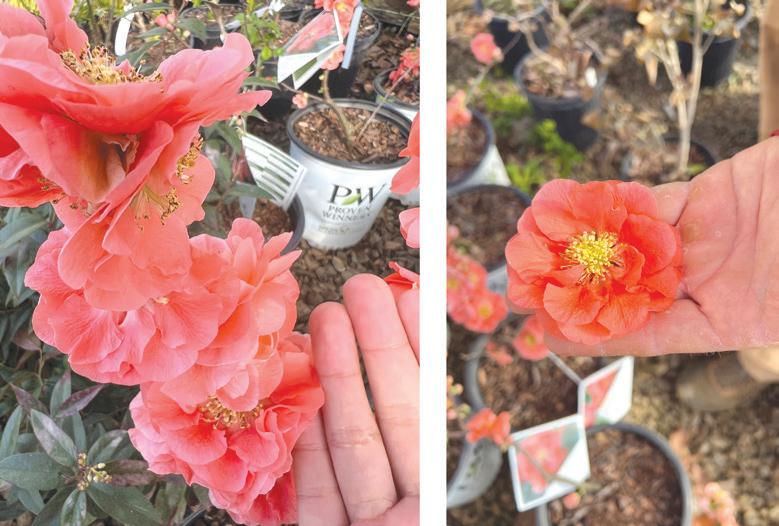
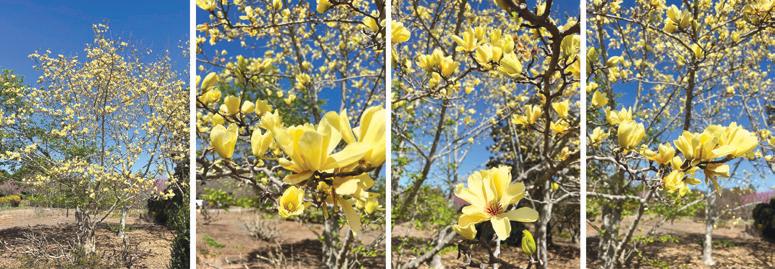
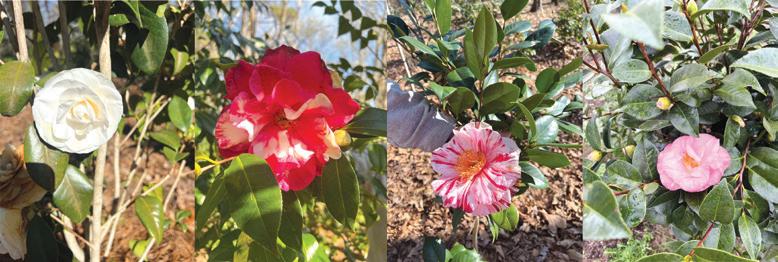


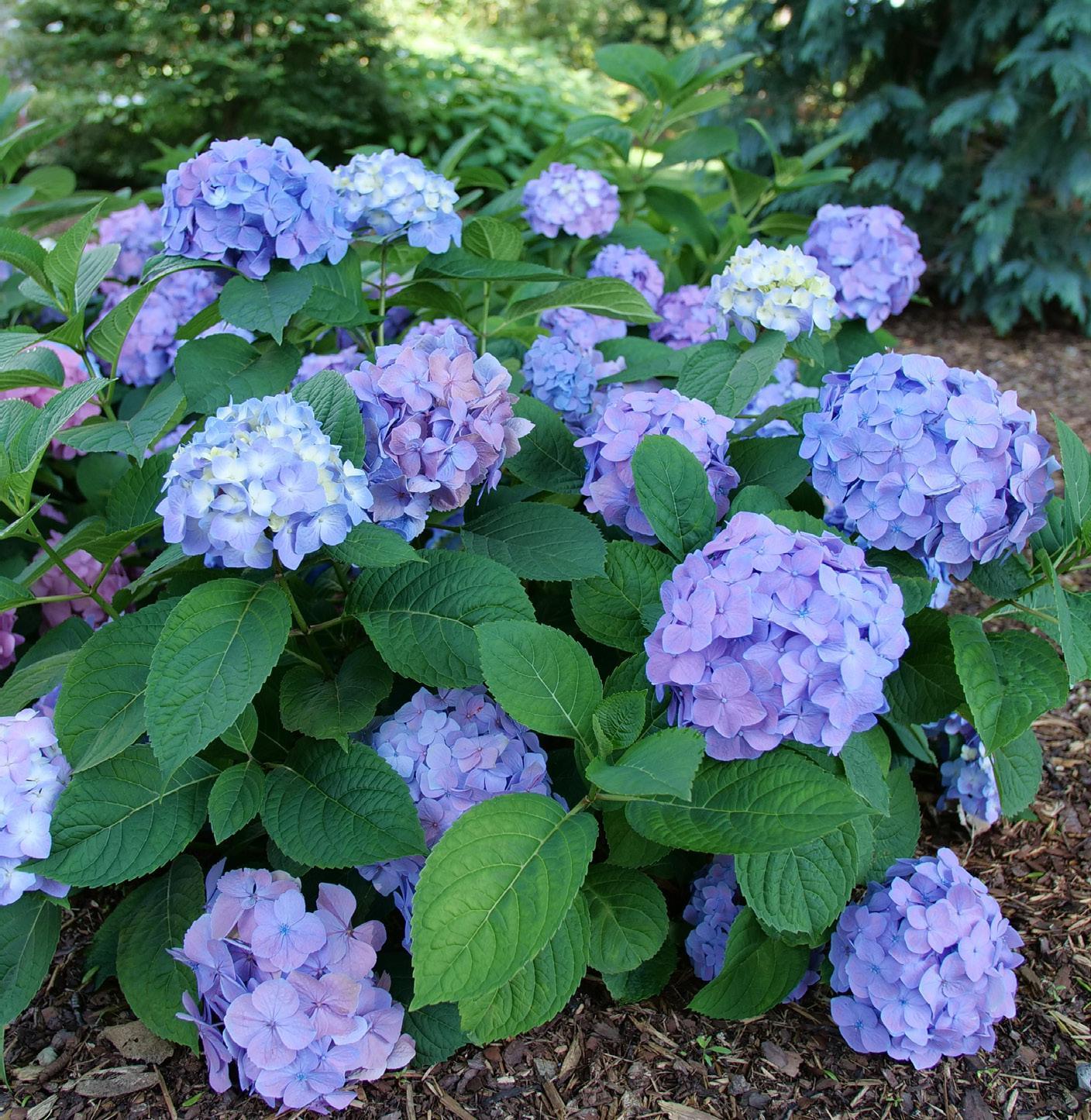
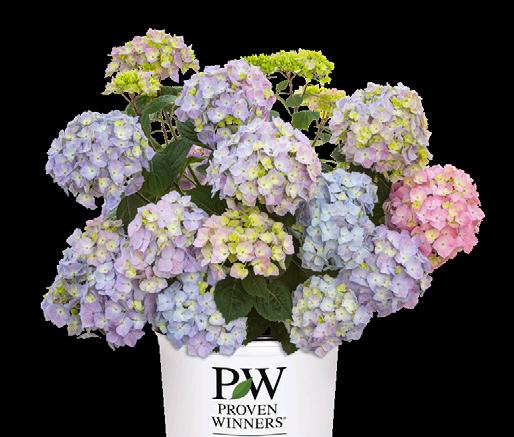

LET’S DANCE SKY VIEW ®
Hydrangea macrophylla × serrata ‘SMNHSME’ PP#34,327; CBRAF
Reblooming | Easy to turn blue

2-3’ tall + 2-4’ wide
Let’s Dance Sky View® hybrid hydrangea has proven to be a standout for consistent, yearly blooming, from Michigan to Florida. Flowers emerge a beautiful soft blue with a honeydew-green eye before maturing to a full sky blue.

•
• Choose
•
•
